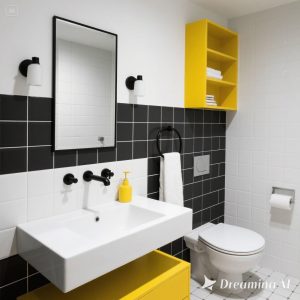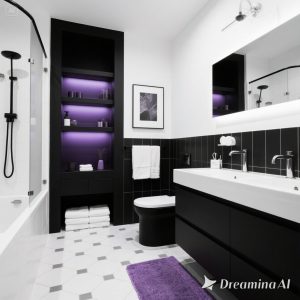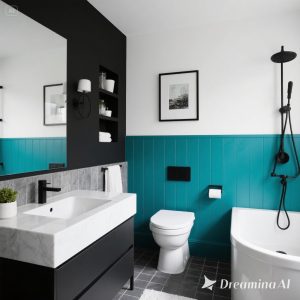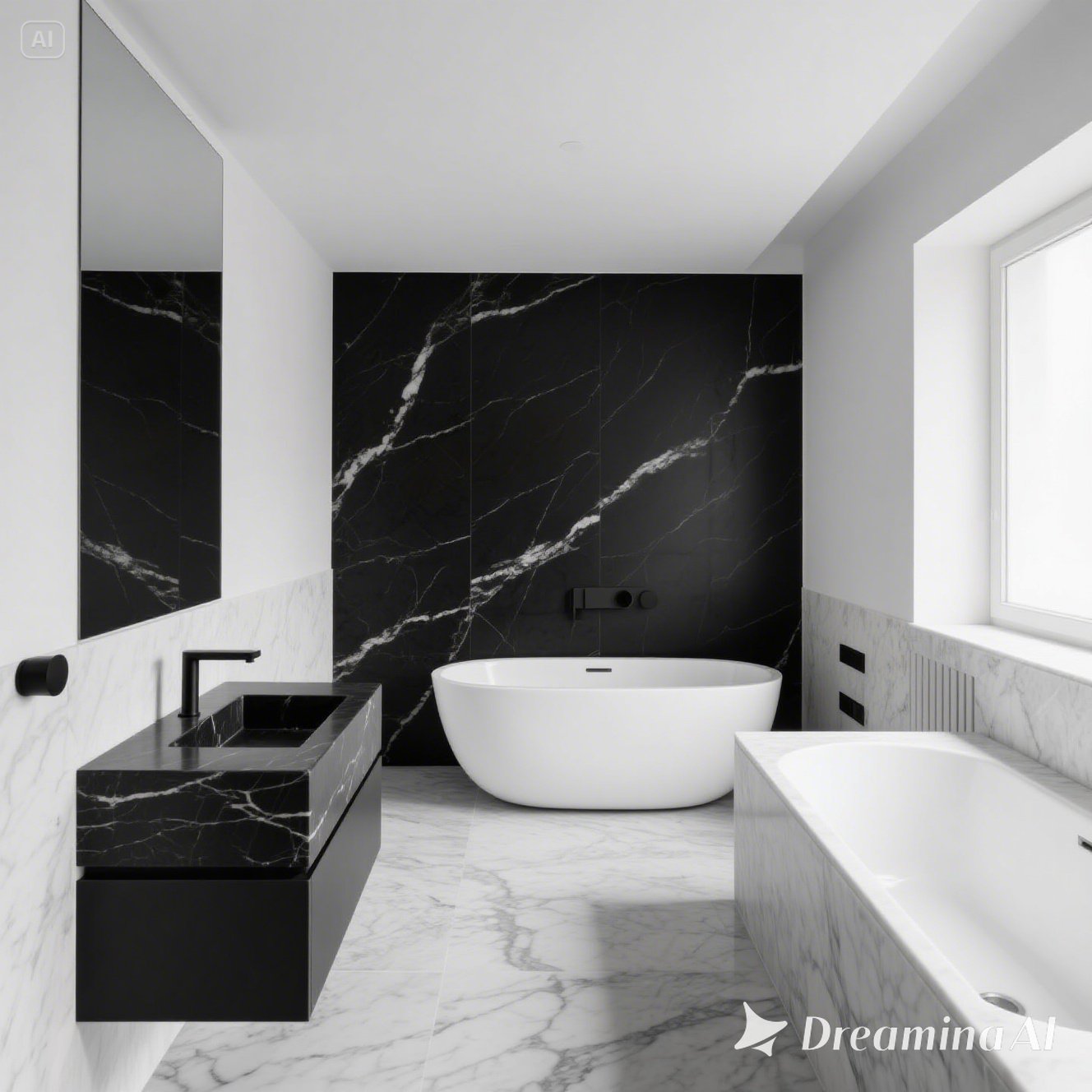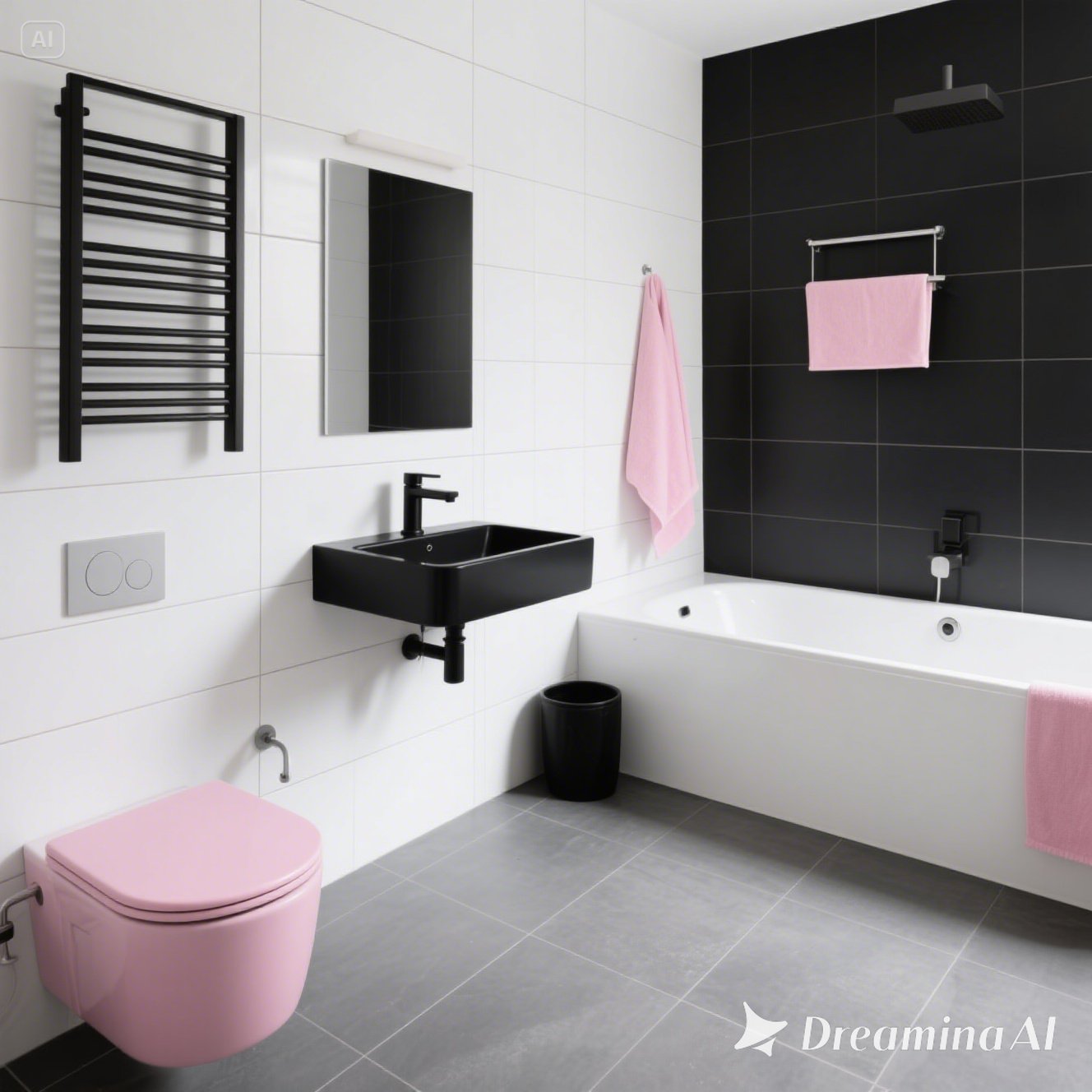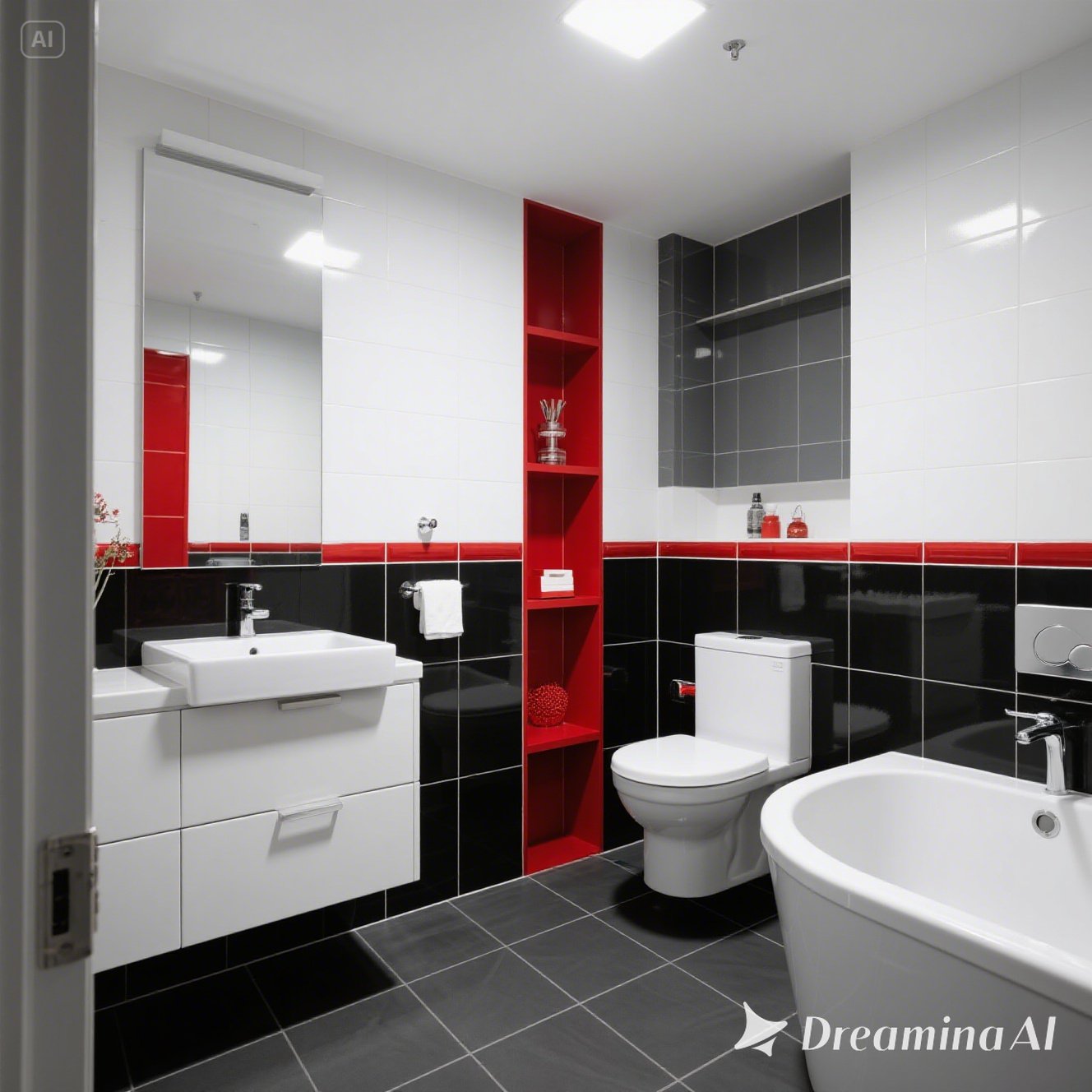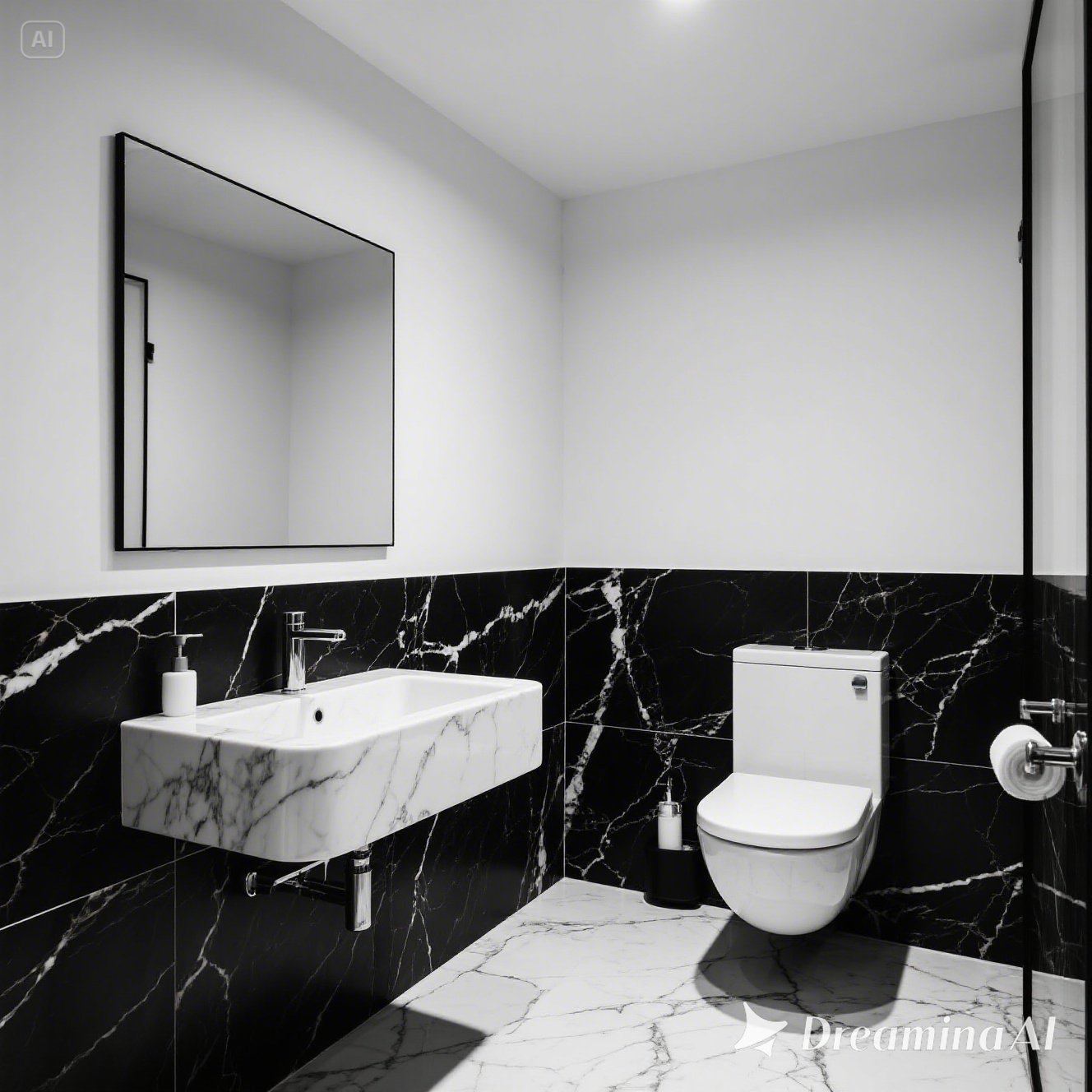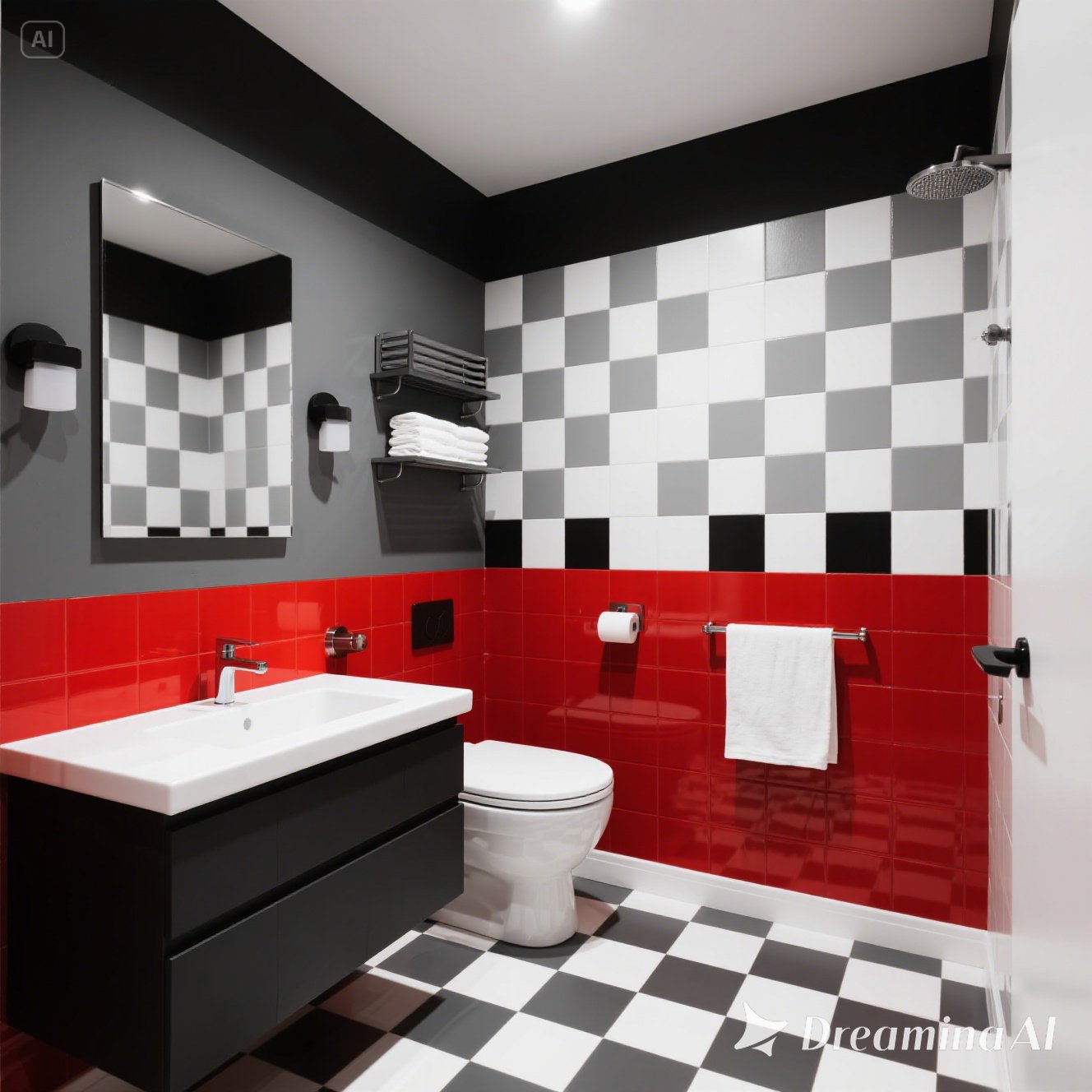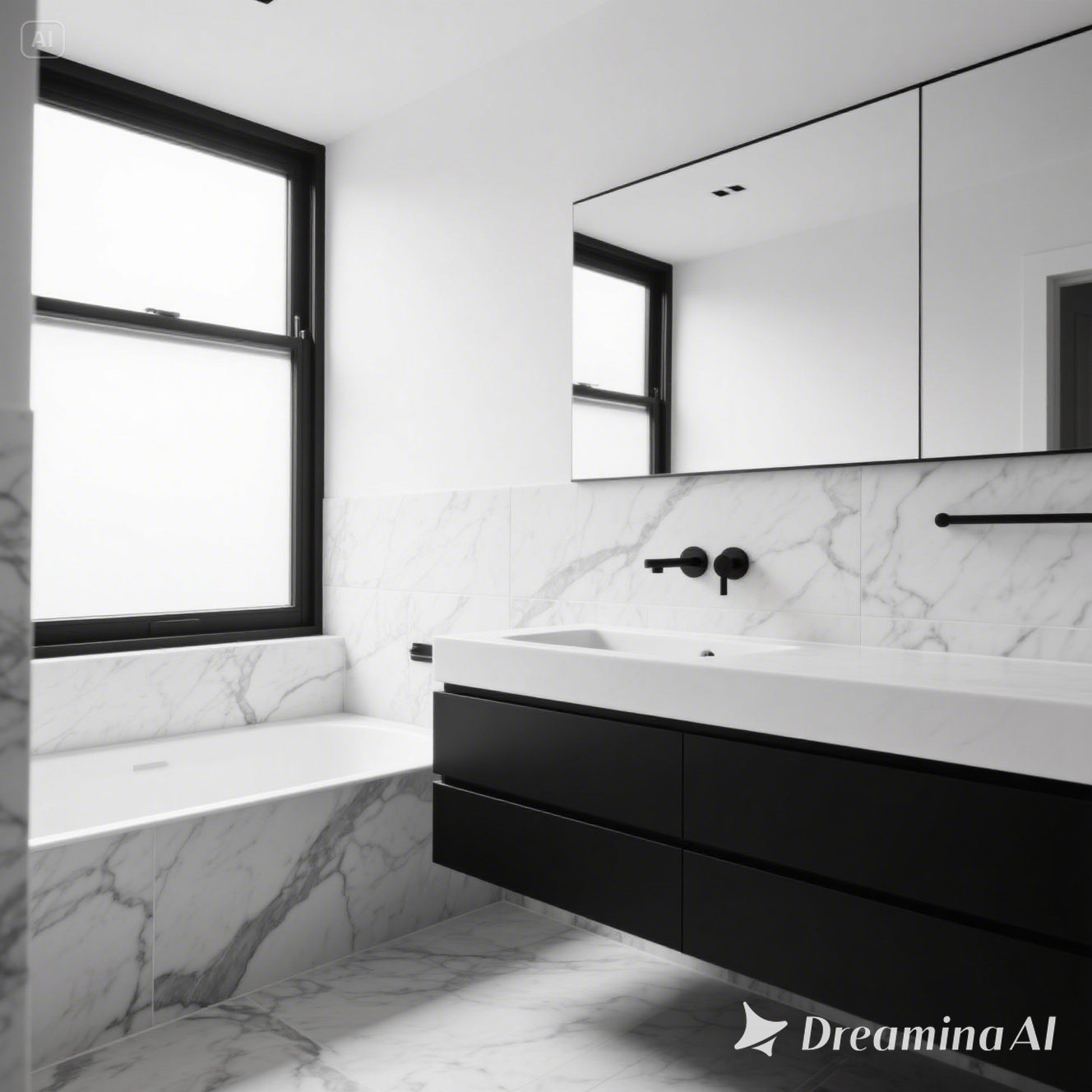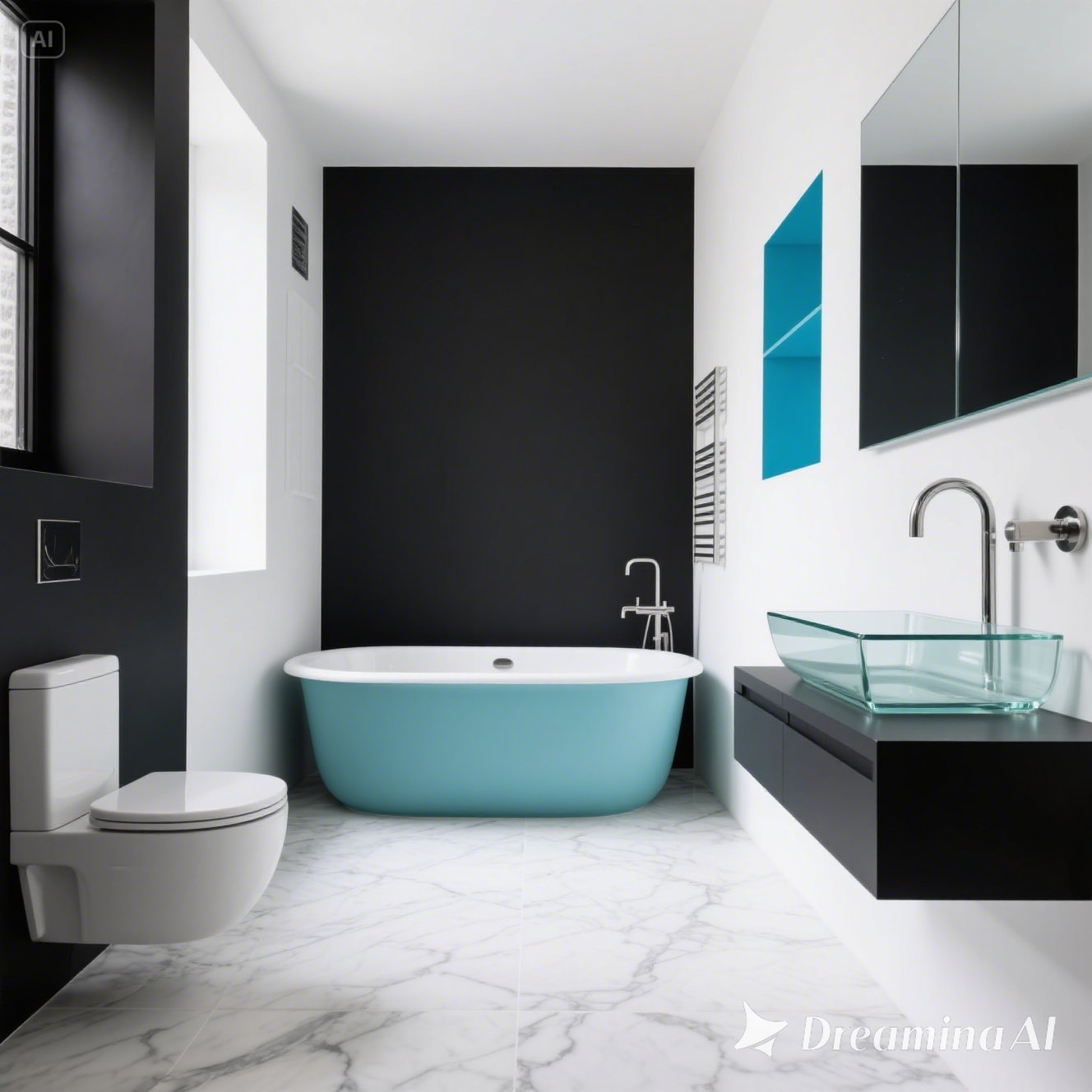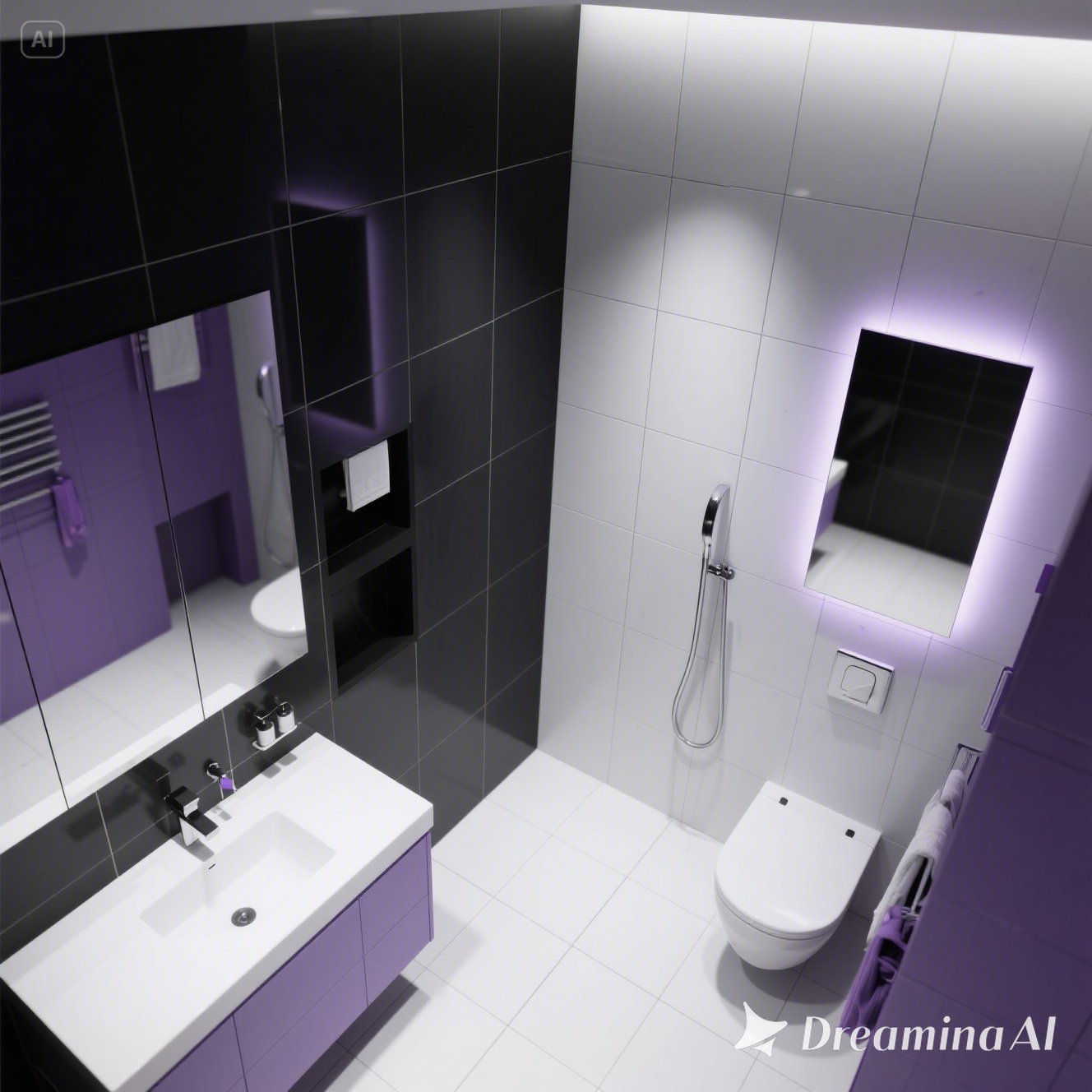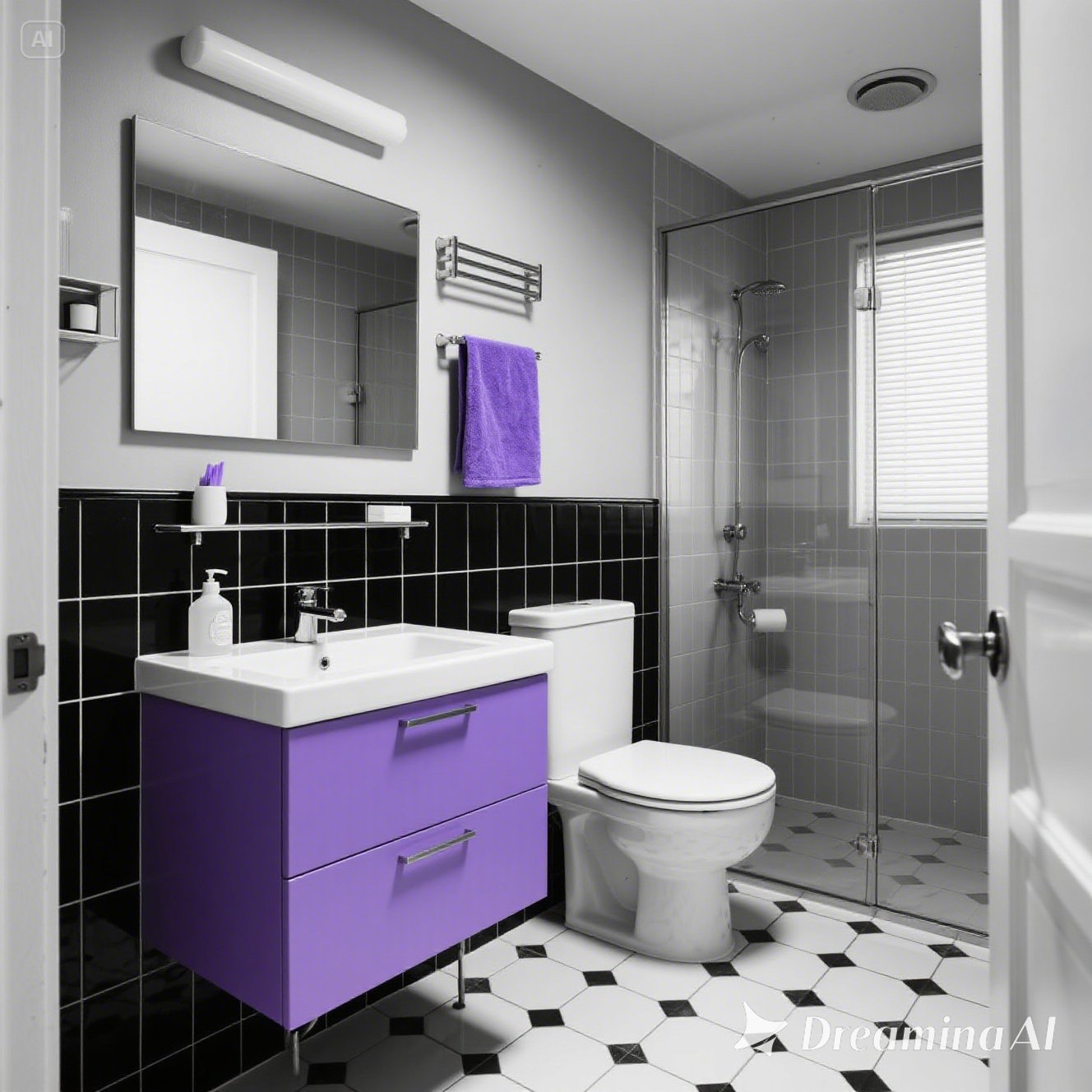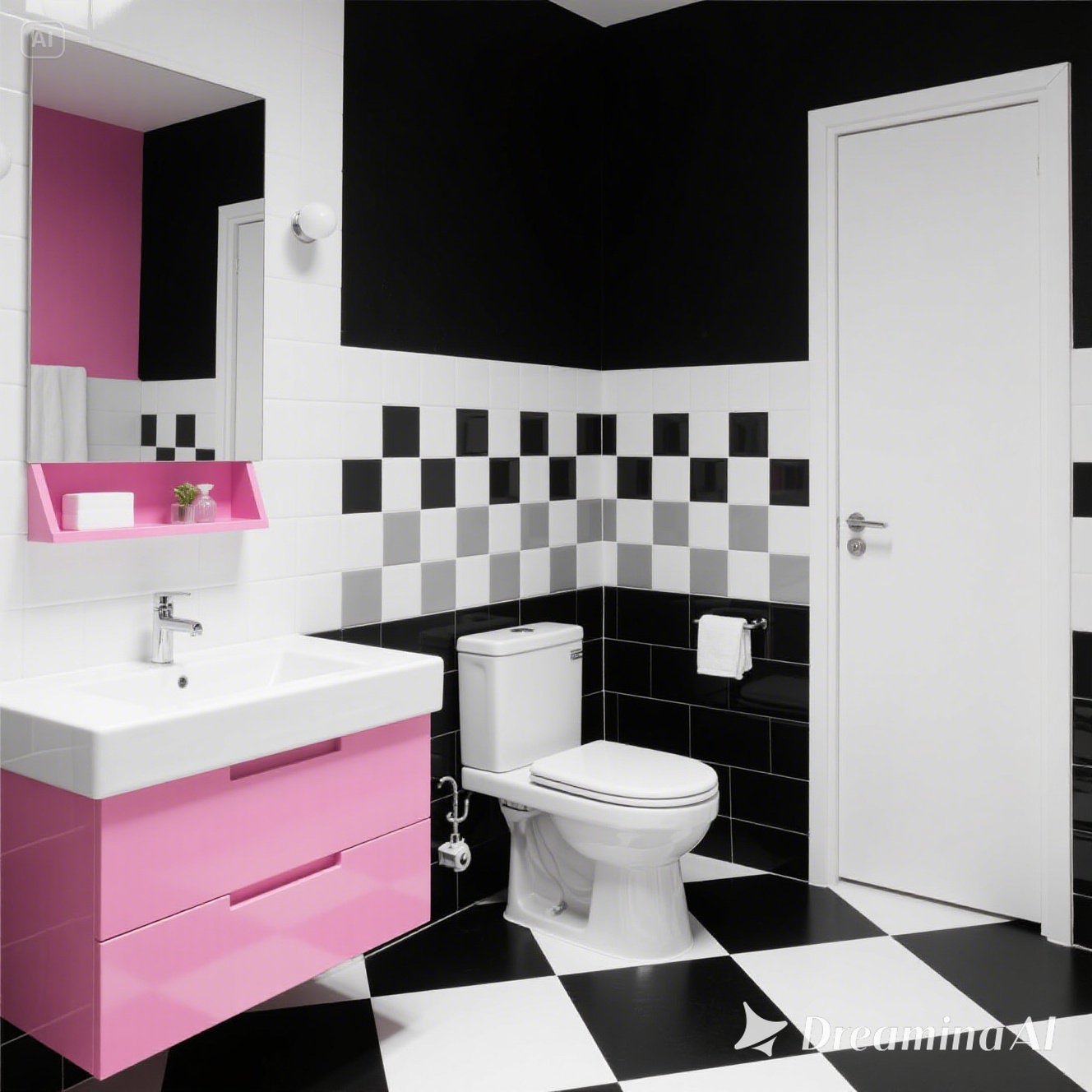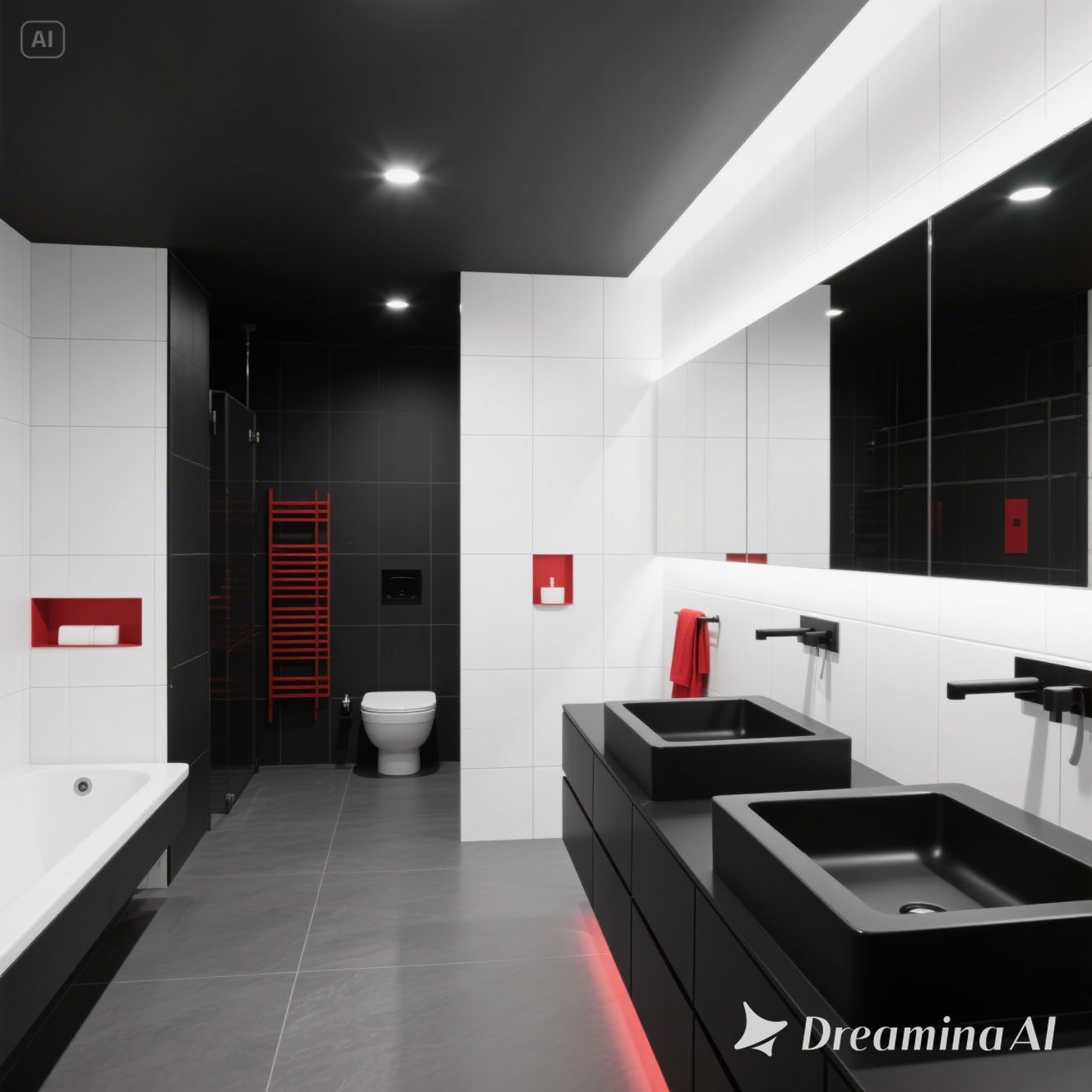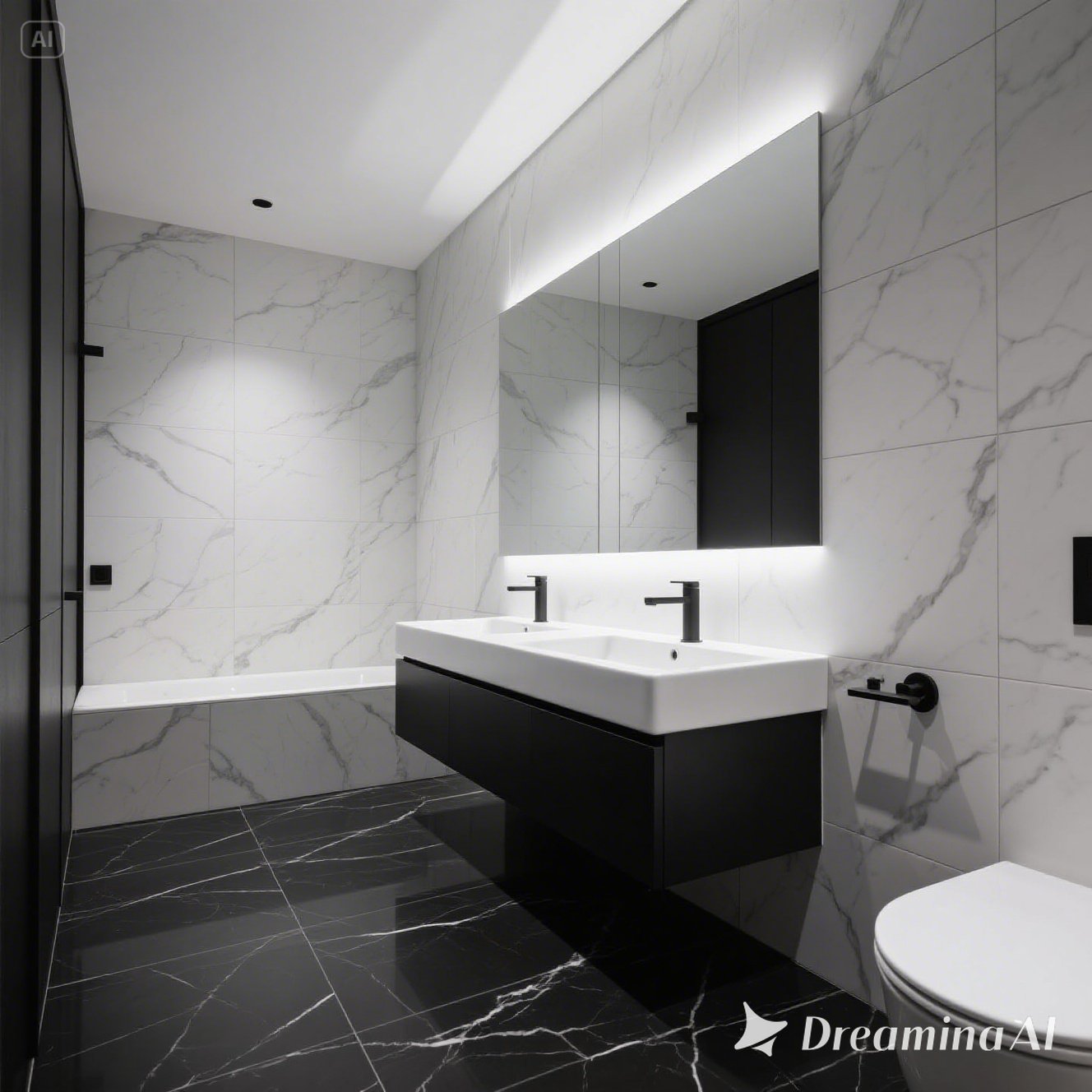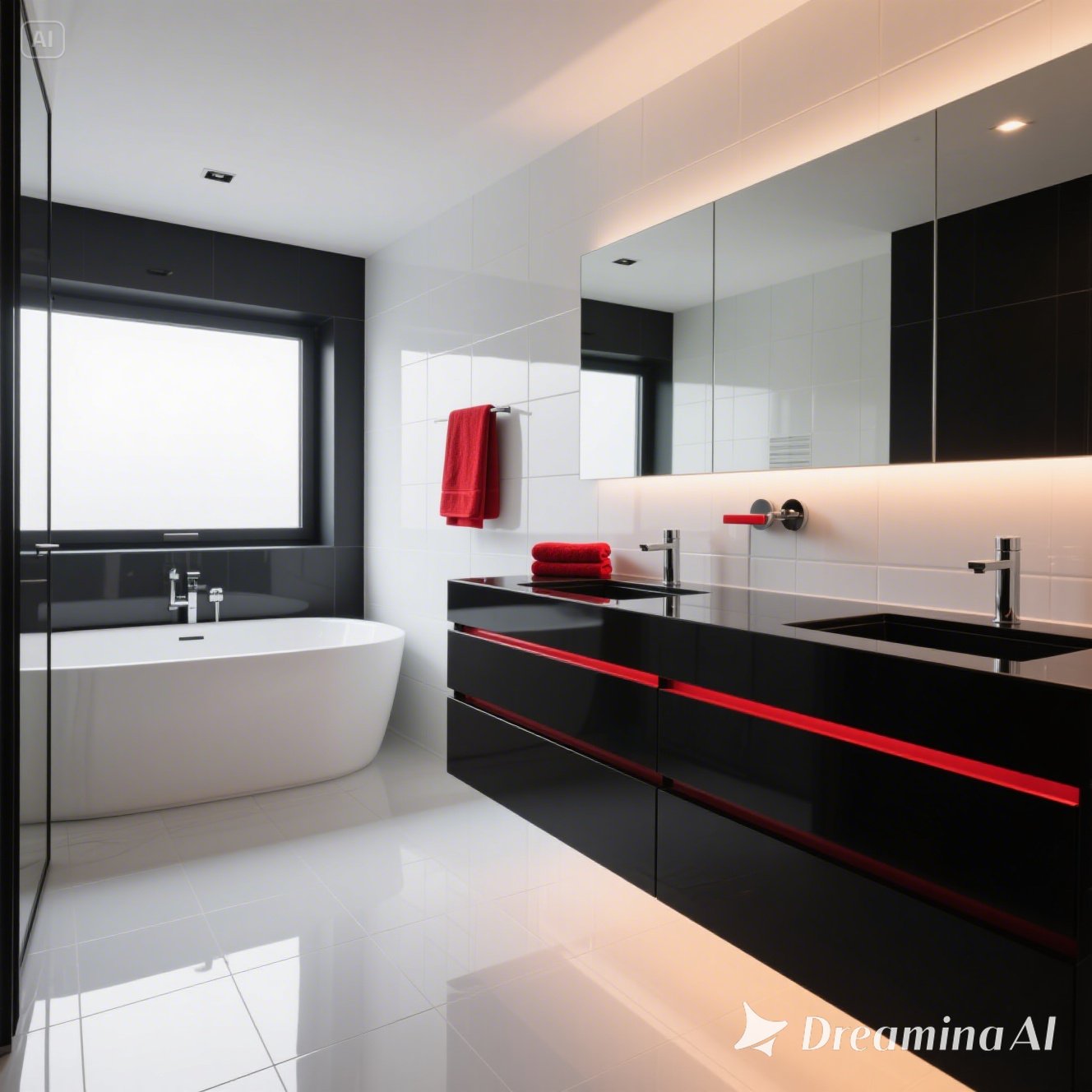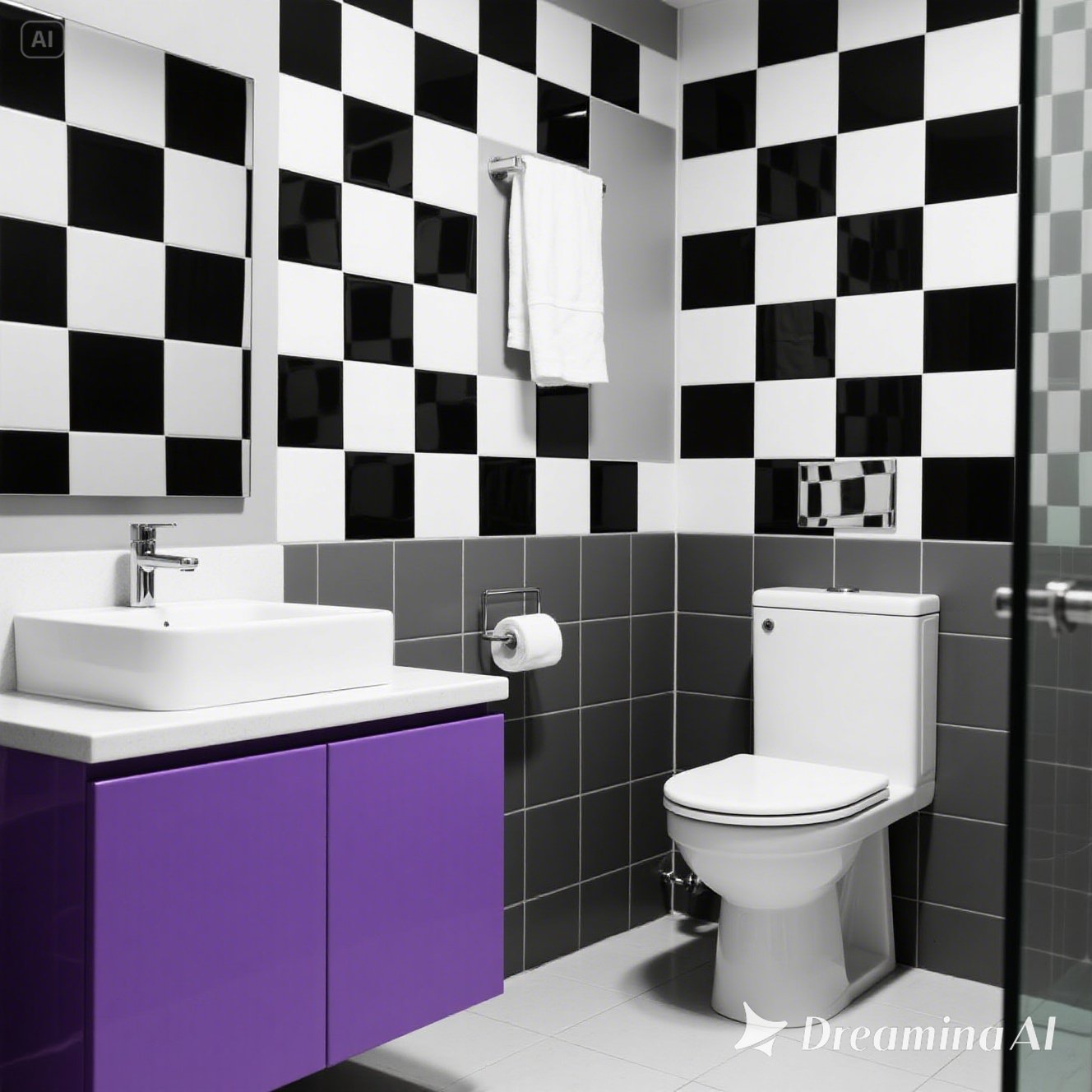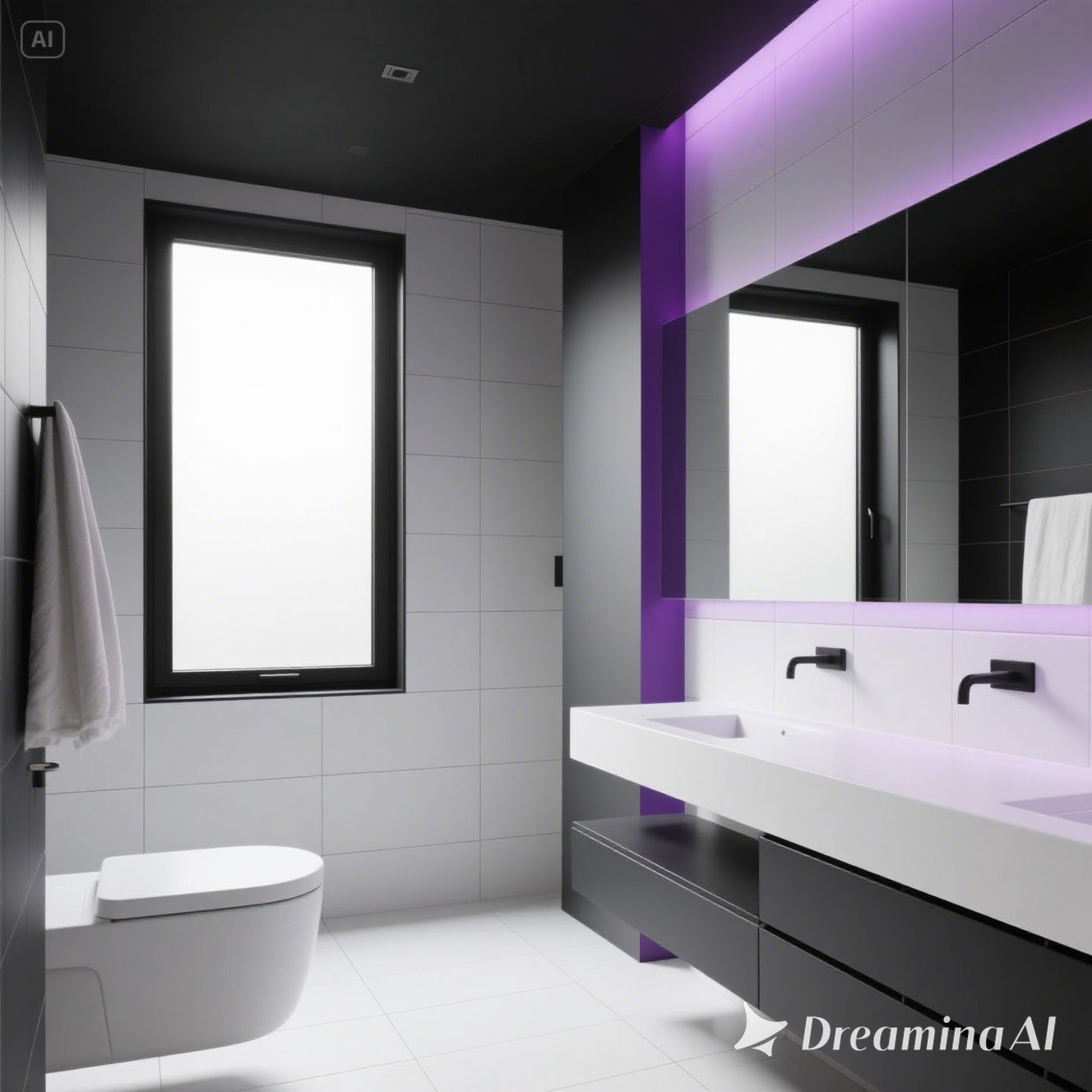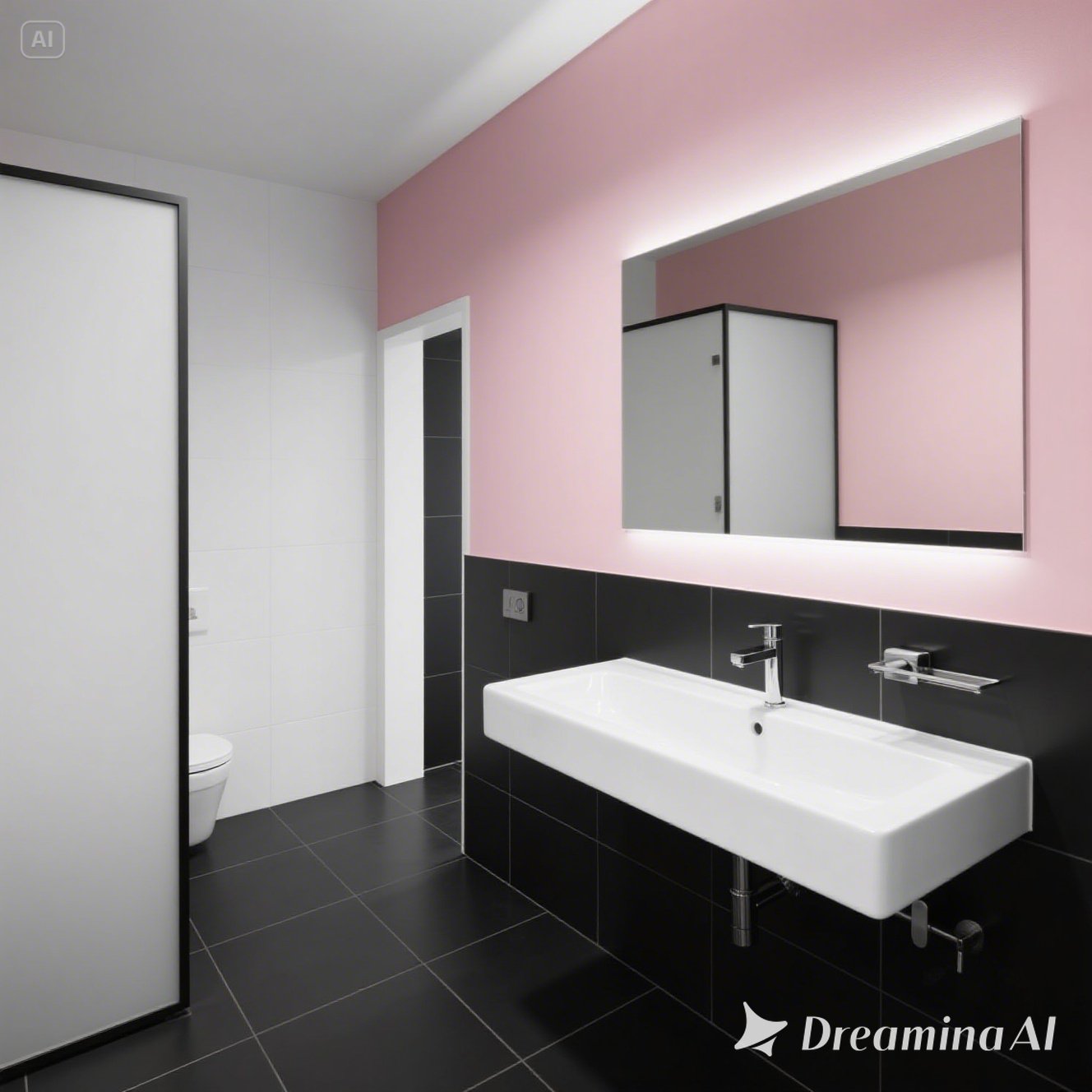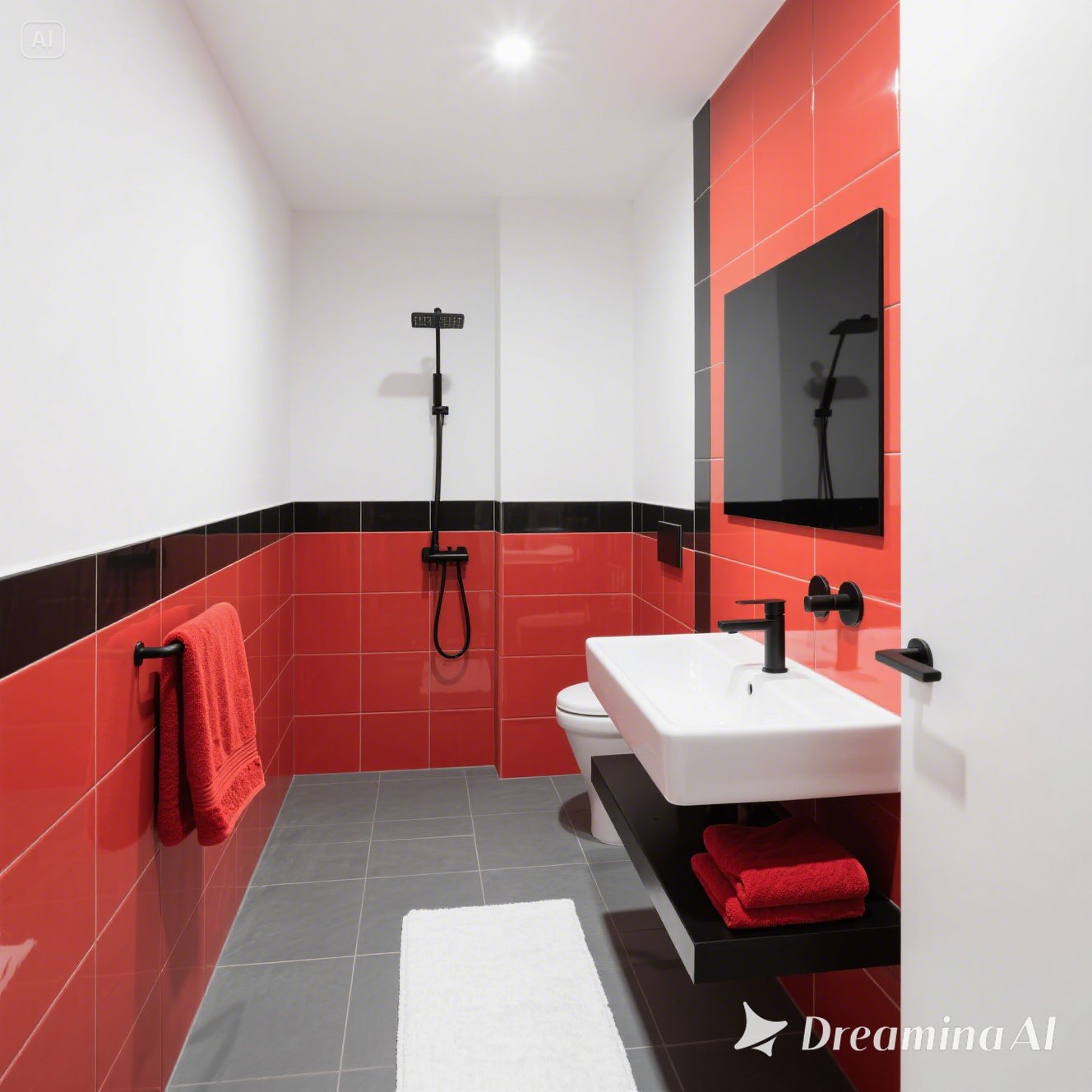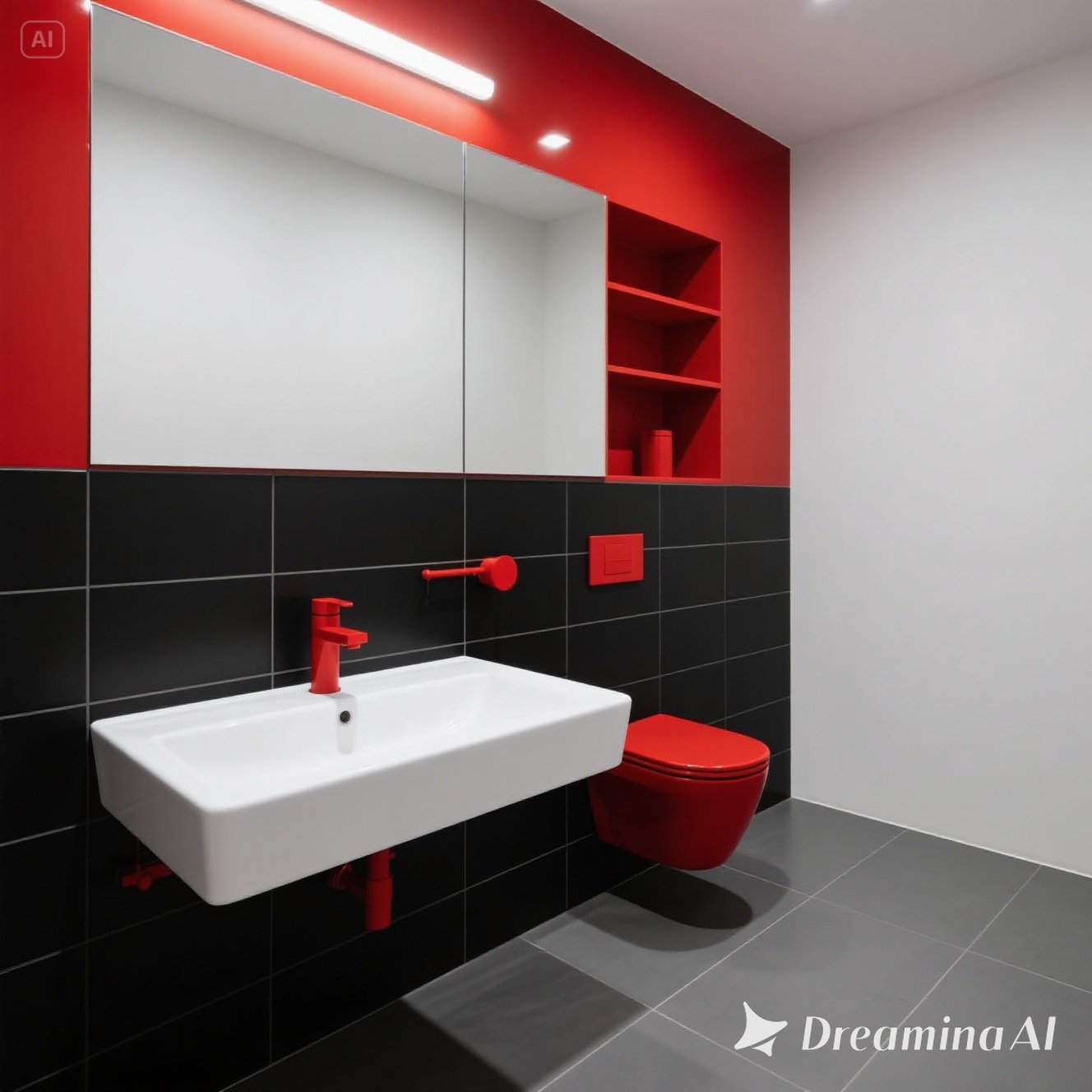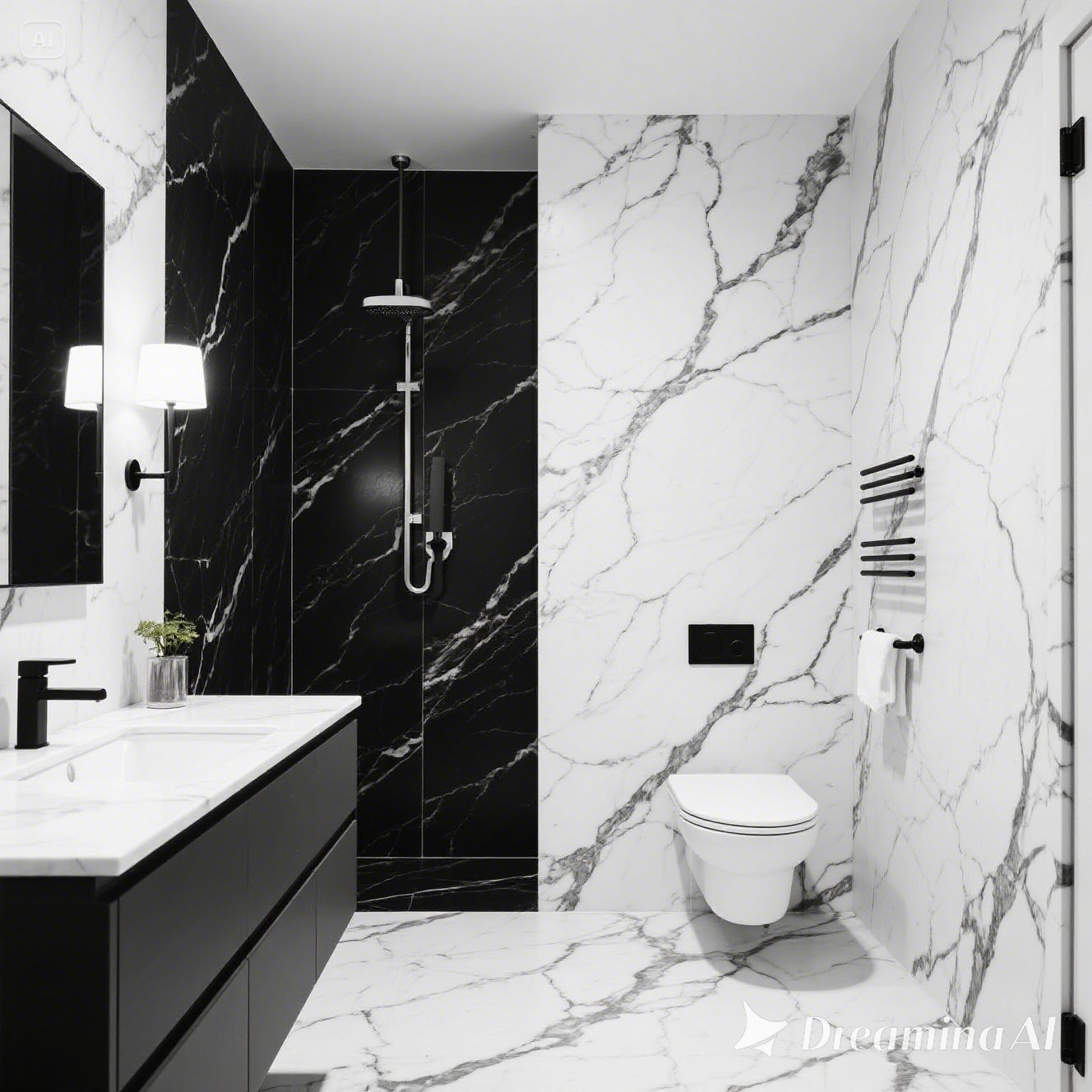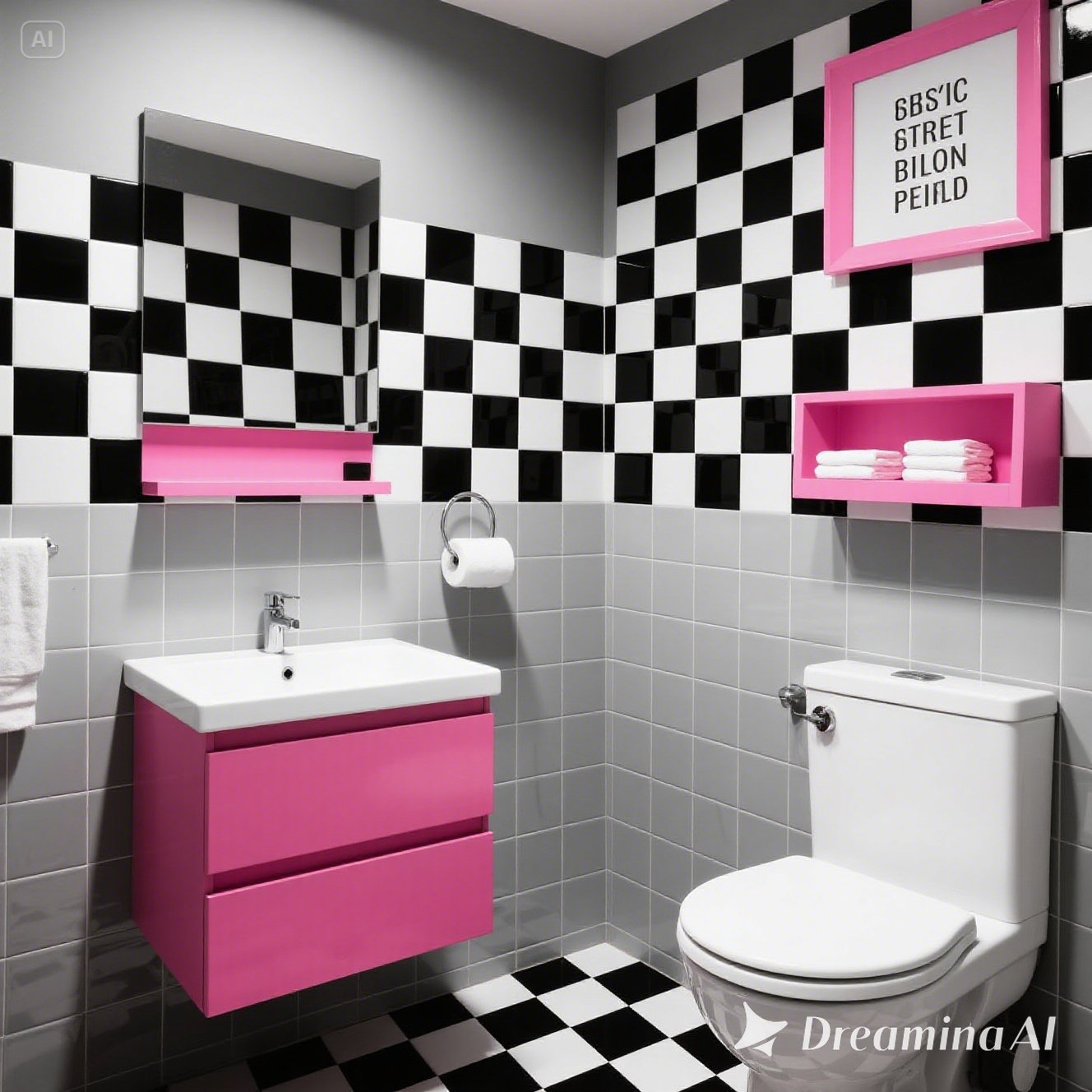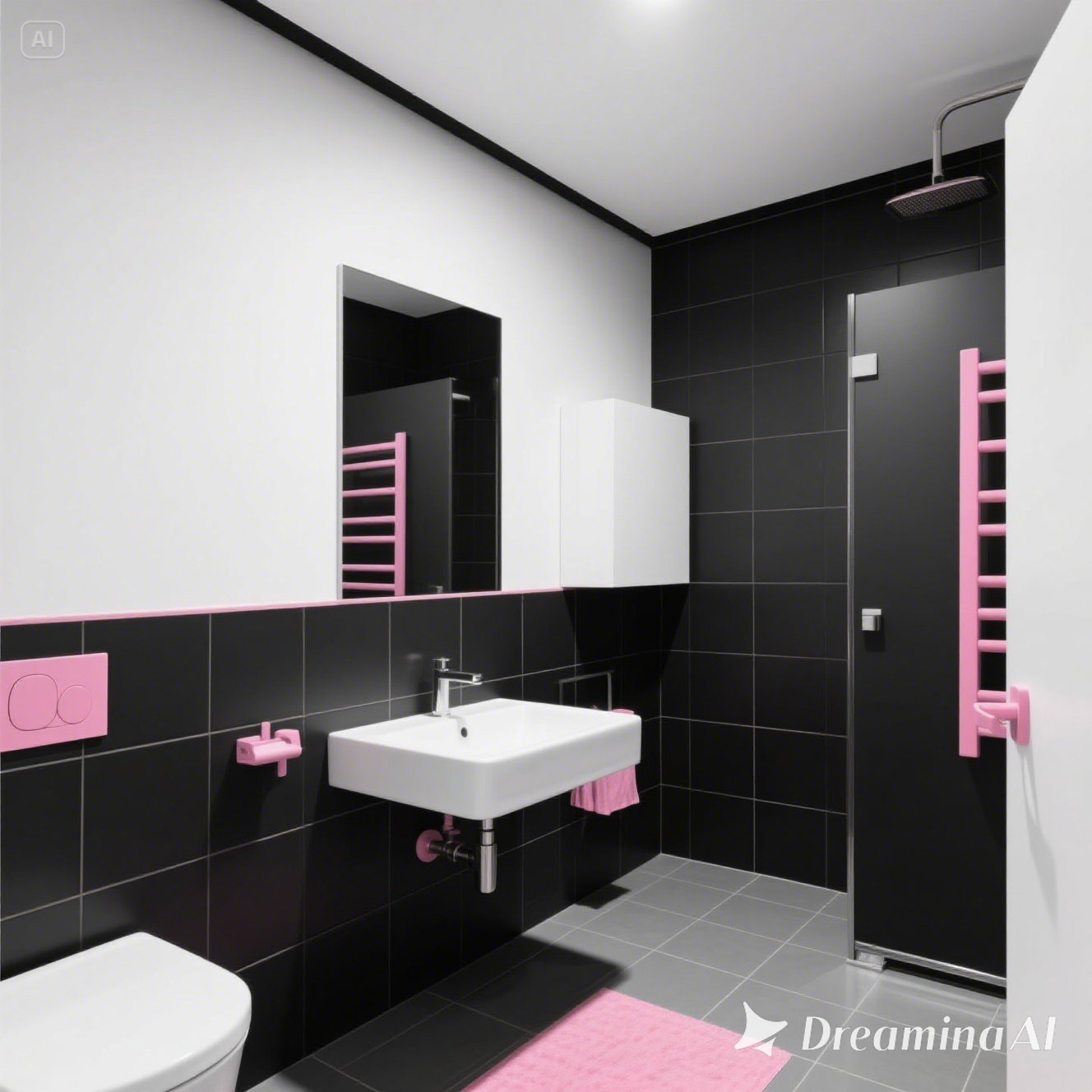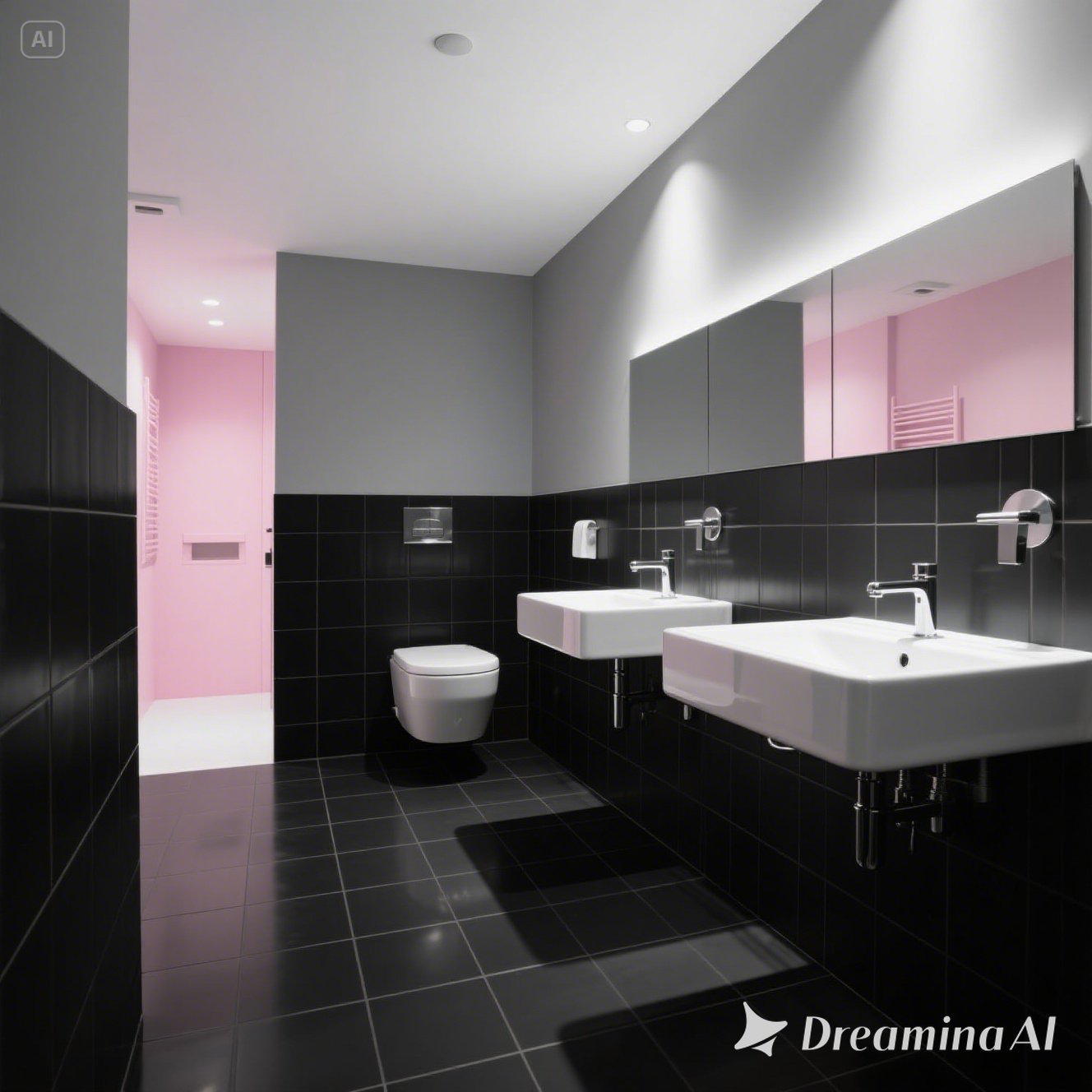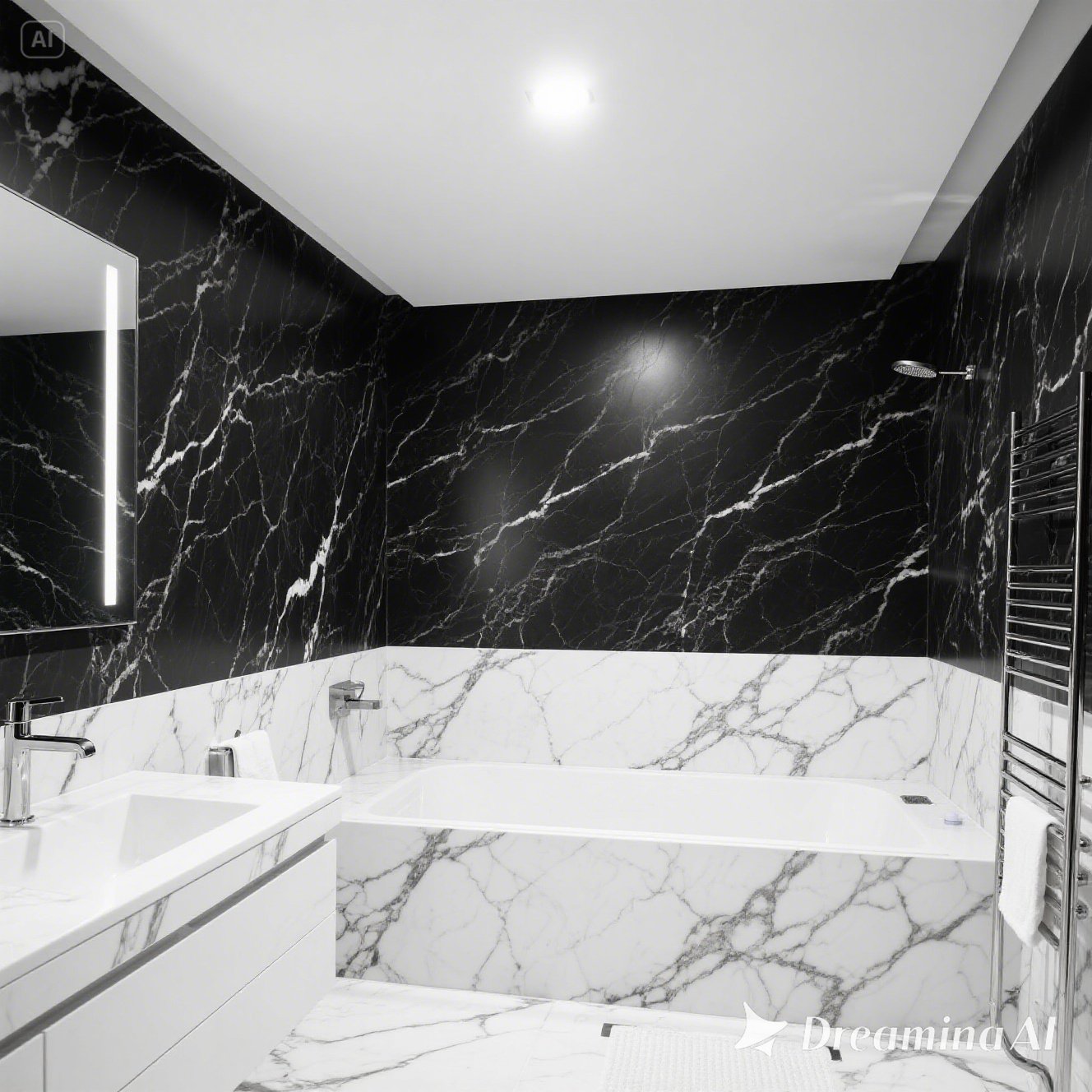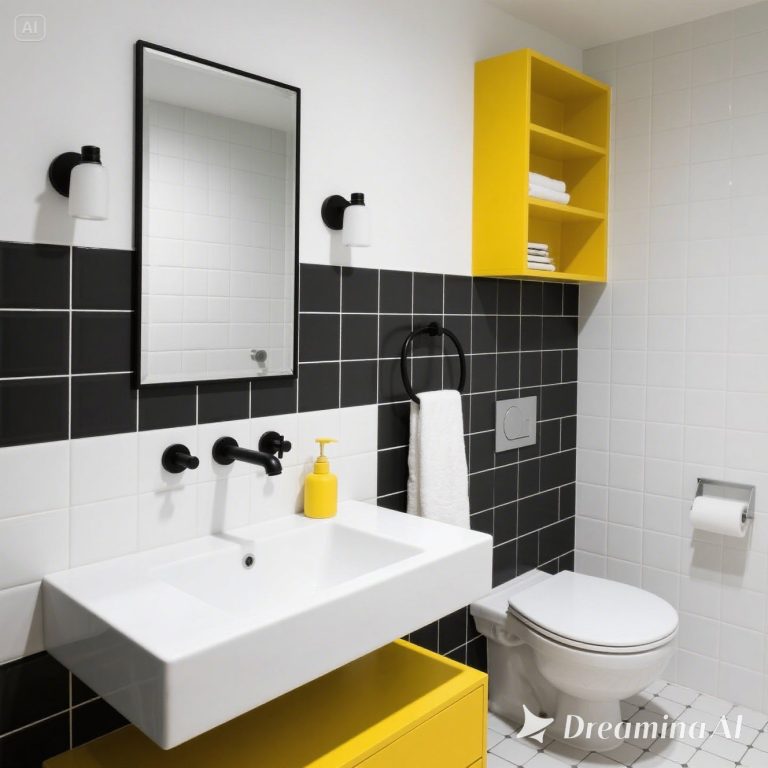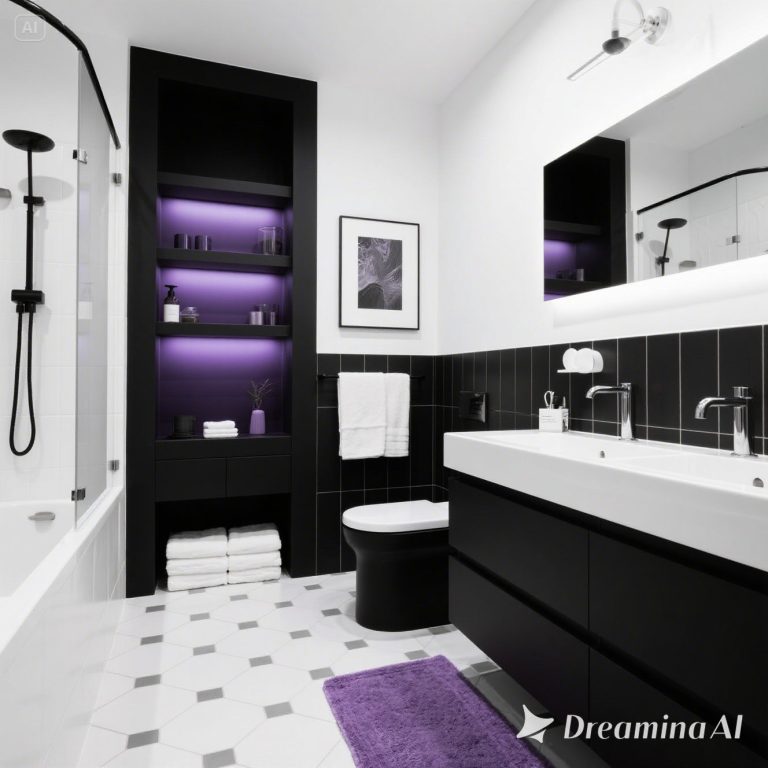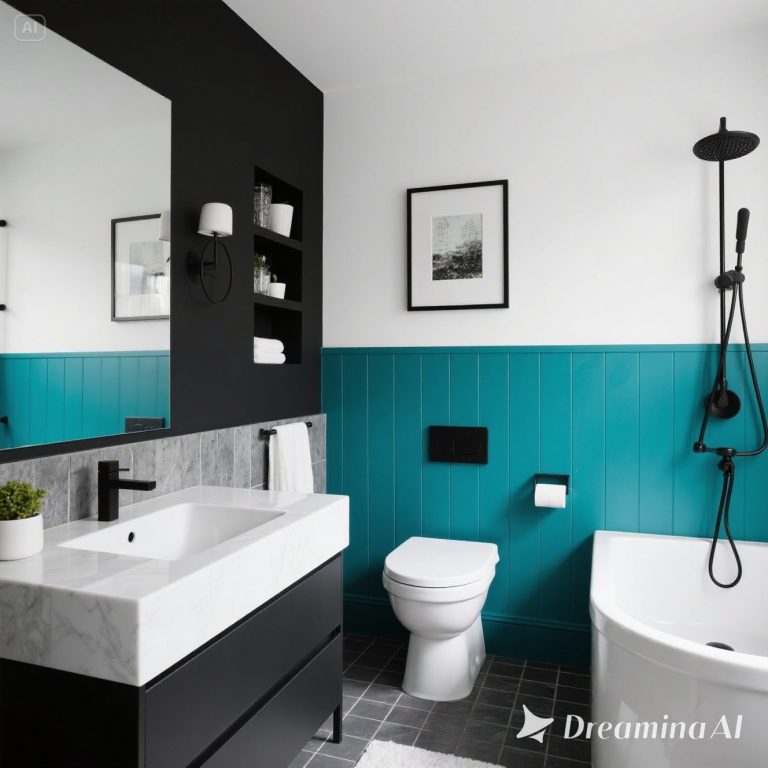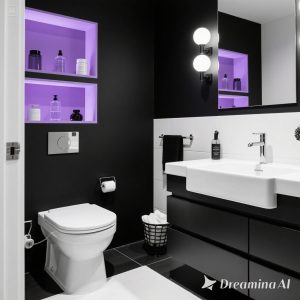The timeless elegance of black, white, and grey in bathroom design offers a perfect foundation for creating spaces that are both contemporary and enduring. This classic color palette provides versatility that few other combinations can match, allowing for dramatic contrasts or subtle transitions depending on your personal style. From minimalist modern to industrial chic or luxurious spa-like retreats, these neutral tones can be adapted to any design aesthetic. In recent years, designers across both the United States and Europe have embraced this sophisticated trio of colors with renewed enthusiasm, developing innovative approaches to incorporate texture, pattern, and visual interest while maintaining the clean, cohesive look that makes these bathrooms so appealing. Whether you’re planning a complete renovation or simply refreshing your existing space, these design ideas will inspire you to create a black, white, and grey bathroom that perfectly balances timeless appeal with contemporary style.
Dramatic Monochrome Contrast
Create a striking bathroom design by emphasizing the powerful contrast between pure black and crisp white elements, with grey serving as a subtle transitional tone. This high-contrast approach makes a bold statement through the strategic placement of black fixtures against white backgrounds—think matte black faucets and shower frames installed against gleaming white tiles. Current trends in American design favor incorporating large-format white tiles with thin black grout lines to add definition without overwhelming the space. European designers often take this concept further by using black penny tiles on floors with white hex tiles on walls, creating textural contrast while maintaining the strict monochrome palette. The key to this dramatic look lies in balancing the visual weight of dark and light elements—perhaps white walls with a statement black vanity, or black accent walls paired with white fixtures. Integrate touches of grey through concrete countertops or natural stone accessories to soften transitions between the stark opposites. This approach works particularly well in bathrooms with abundant natural light, as the strong contrasts create dynamic visual interest that changes throughout the day as lighting conditions shift.
Geometric Tile Patterns
Transform your bathroom with the captivating visual impact of geometric tile patterns that showcase the sophisticated interplay between black, white, and grey. This approach leverages the inherent drama of these contrasting tones to create focal points and define zones within the bathroom space. European designers currently favor large-format hexagonal tiles arranged in gradient patterns that transition from black near the floor to light grey and eventually white as they climb the walls, creating an ombre effect that adds height to the room. In American design trends, the revival of encaustic cement tiles featuring intricate black, white, and grey patterns offers a perfect opportunity to incorporate vintage-inspired geometrics on floors while keeping walls more subdued. The most cutting-edge applications feature three-dimensional tiles with raised geometric patterns that cast subtle shadows, adding another layer of visual interest through texture. For a more subtle approach, consider standard subway tiles installed in unexpected patterns like herringbone or basketweave using a thoughtful combination of black, grey, and white pieces to create custom patterns. This geometric approach works particularly well in contemporary bathrooms, where the graphic clarity of the patterns complements clean-lined fixtures and minimal decorative elements.
Industrial Chic Aesthetics
Embrace the raw, authentic appeal of industrial design by incorporating exposed elements, utilitarian fixtures, and weathered finishes into your black, white, and grey bathroom. This increasingly popular aesthetic draws inspiration from converted warehouses and lofts, celebrating structural components rather than concealing them. Current American trends feature polished concrete floors in soft grey tones paired with subway-tiled walls and matte black plumbing fixtures for an urban edge. European designers often incorporate concrete wall panels with subtle variations in grey toning alongside factory-style shower enclosures featuring black metal framing and clear glass. The industrial bathroom relies heavily on texture—consider white brick-look tiles with dark grey grout lines, smooth concrete vanity tops, and black metal accent pieces with slight distressing that reveals hints of silver underneath. Lighting plays a crucial role in this style, with exposed bulb fixtures featuring black metal cages or vintage-inspired task lighting with articulated arms adding both function and industrial character. For authentic industrial warmth, incorporate reclaimed wood elements in weathered grey tones through shelving, mirror frames, or even ceiling beams that introduce organic texture while maintaining the restricted color palette. This approach creates bathrooms with distinctive character and timeless appeal that won’t quickly fall victim to changing trends.
Luxury Marble Statements
Elevate your bathroom design with the timeless luxury of marble that naturally incorporates black, white, and grey tones in organic patterns. This approach focuses on the inherent elegance of natural stone while maintaining the sophisticated restraint of a limited color palette. Current European luxury trends showcase book-matched marble slabs with dramatic veining installed from floor to ceiling on feature walls, creating nature-inspired art that becomes the room’s focal point. American designers often take a more practical approach by using large-format marble-look porcelain tiles that capture the aesthetic of natural stone with improved durability and maintenance requirements. The latest innovations include porcelain slabs measuring up to 5’x10′ that can be installed with minimal grout lines for a seamless, monolithic appearance. For understated elegance, consider Carrara or Calacatta marble varieties featuring soft grey veining on white backgrounds, or for more dramatic impact, nero marquina with its distinctive white veins against deep black. Complement these stone elements with fixtures in corresponding tones—perhaps brushed nickel or chrome for lighter marbles, or matte black for darker varieties. This marble-focused approach creates bathrooms with enduring sophistication that transcends passing trends, offering the perfect foundation for both classic and contemporary styling.
Minimalist Scandinavian Influence
Create a bathroom that embodies the clean simplicity and functional beauty of Scandinavian design by focusing on light neutrals with thoughtful black accents. This approach emphasizes open space, natural light, and uncluttered surfaces that promote a sense of calm and order. Contemporary European interpretations feature pale grey walls—often in lime-based finishes that add subtle texture—paired with white fixtures and select black hardware elements that anchor the light palette. American adaptations of this Nordic aesthetic often incorporate warm grey wood tones through vanities or wall cladding that introduce organic elements without compromising the clean color scheme. The Scandinavian bathroom prioritizes practical storage solutions that maintain visual simplicity through wall-mounted vanities with hidden hardware, recessed medicine cabinets, and multifunctional elements like mirror-fronted storage. Lighting is crucial in this design approach, with fixtures that provide abundant, diffused illumination often through simple linear sconces or pendant lights featuring black metal and white glass components. Textiles play an important role in softening the potentially stark palette—consider light grey Turkish towels, natural linen shower curtains with black stripe details, or woven wool bath mats in grey geometric patterns. This Scandinavian-influenced design creates bathrooms that feel spacious, serene, and timeless while maintaining distinctive character through quality materials and thoughtful details.
Art Deco Revival
Channel the glamorous sophistication of the Art Deco era through a contemporary interpretation that showcases black, white, and grey in geometric harmony. This approach celebrates the bold patterns and luxurious materials characteristic of 1920s and 1930s design while updating them for modern sensibilities. Current European trends feature black and white checkered floors in marble or porcelain paired with grey walls and distinctive black trim details that outline architectural features. American designers often incorporate fan-shaped tile patterns in alternating black and white with soft grey grout lines that reference Art Deco’s fascination with stylized natural forms. Statement mirrors with geometric metal frames in black or antiqued silver add period authenticity while creating focal points in the bathroom. Lighting fixtures play an essential role in establishing Art Deco character through angular sconces featuring frosted white glass with black metal or chrome details. The most sophisticated interpretations incorporate authentic materials like beveled mirror panels, fluted glass, and terrazzo flooring in custom grey tones with black and white aggregate. For a subtle approach to this distinctive style, consider incorporating Art Deco-inspired patterns through accessories like geometric towels, angular soap dishes in black or white ceramic, or shower curtains featuring characteristic zigzag or sunburst motifs. This revival style creates bathrooms with distinctive personality and historical references while maintaining contemporary function.
Japanese Zen Simplicity
Embrace the tranquil minimalism of Japanese design by creating a bathroom that focuses on balance, negative space, and natural elements within a black, white, and grey palette. This approach prioritizes calm simplicity through clean lines and uncluttered surfaces that promote mindfulness and relaxation. Contemporary European interpretations feature large-format grey porcelain tiles with subtle woodgrain patterns installed in horizontal bands that reference traditional Japanese architecture, complemented by matte black plumbing fixtures and simple white vessels. American adaptations often incorporate authentic natural materials like black granite soaking tubs or shower floors covered in smooth river pebbles in varying shades of grey. The Japanese aesthetic emphasizes the beauty of negative space—consider walls partially tiled in white with the upper portion painted soft grey, creating breathing room and subtle transitions between surfaces. Lighting plays a crucial role in this design approach, often through fixtures that create diffused, ambient illumination reminiscent of traditional shoji screens, perhaps with black metal framing elements that add definition without heaviness. Natural elements are essential in Japanese-inspired spaces—incorporate bamboo bath accessories, a small indoor zen garden with black and white pebbles, or a single perfectly placed bonsai tree or ikebana flower arrangement to add life and focus. This approach creates bathrooms that feel like personal sanctuaries, offering visual respite and promoting wellbeing through thoughtful simplicity.
Textural Monochrome Layers
Create visual depth and interest in your black, white, and grey bathroom by focusing on textural variations rather than pattern or additional colors. This sophisticated approach maintains the clean elegance of a limited palette while introducing tactile diversity that engages the senses. Current European design trends feature three-dimensional wall tiles in matte white with geometric relief patterns that create subtle shadow play alongside honed black stone countertops and brushed nickel fixtures. American designers often incorporate textural contrast through mixed materials—perhaps smooth white porcelain fixtures against rough grey stone accent walls, complemented by matte black hardware with knurled detailing for tactile interest. The most innovative applications layer multiple textures within the same color—consider a shower enclosure featuring white penny tiles on lower walls, white subway tiles with beveled edges in the middle section, and white microcement with subtle trowel marks on upper walls, creating textural zones while maintaining color cohesion. Fabric elements introduce additional textural opportunities through ribbed or waffle-weave towels in varying grey tones, shower curtains with subtle embossed patterns, or bath mats featuring high-low pile in geometric arrangements. This textural approach adds sophisticated complexity to neutral bathrooms without compromising their serene quality, creating spaces that reveal their details gradually and reward closer inspection with discovered details and tactile pleasures.
Modern Classic Fusion
Strike the perfect balance between timeless elegance and contemporary sensibilities by combining classic architectural elements with modern fixtures in a cohesive black, white, and grey palette. This approach honors traditional design principles while updating them for current lifestyles, creating bathrooms that feel both familiar and fresh. European interpretations often feature traditional elements like claw-foot tubs in matte white with black feet, paired with sleek wall-mounted vanities in charcoal grey and minimalist cylindrical sconces. American adaptations frequently incorporate architectural details like wainscoting or panel molding painted crisp white on lower walls with soft grey above, establishing traditional structure that frames modern artwork or geometric mirrors. The most successful fusion bathrooms carefully balance decorative and minimal elements—consider classic marble basketweave floors in black and white paired with streamlined fixtures lacking ornate details. Hardware presents perfect opportunities for style definition, perhaps through traditional cross-handle faucets rendered in unexpected matte black, or modern single-lever designs in unlacquered brass that will patina to a soft grey over time. This approach works particularly well in period homes being thoughtfully updated, allowing bathrooms to acknowledge architectural heritage while embracing contemporary function and aesthetic preferences. The flexible nature of the black, white, and grey palette makes it ideal for this design strategy, as these neutrals appear in both traditional and modern contexts, creating a visual bridge between different design eras.
Boutique Hotel Luxury
Transform your bathroom into a personal retreat inspired by luxury boutique hotels through sophisticated material combinations and thoughtful amenities within a black, white, and grey scheme. This approach focuses on creating a sensory experience that elevates daily routines into moments of indulgence. Contemporary European hotel design trends feature floor-to-ceiling grey marble with subtle white veining in shower enclosures paired with matte black fixtures and backlit mirrors that eliminate shadows. American luxury interpretations often incorporate dramatic lighting effects—like recessed LED strips washing down textured black tile feature walls—alongside heated white stone floors and floating vanities in charcoal grey with integrated lighting. The most distinctive boutique bathrooms layer unexpected elements that create memorable impressions, perhaps through sculptural free-standing tubs in matte white positioned beneath contemporary chandelier fixtures featuring smoked glass and black metal components. Accessories play a crucial role in establishing hotel-inspired luxury—consider plush oversized towels in varying grey tones, leather or shagreen bathroom accessories in black or grey, and high-end toiletries displayed in refillable black pumps rather than commercial packaging. Technology integration enhances the experience through features like digital shower controls, heated towel bars in matte black, or mirrors with integrated anti-fog and lighting functions. This approach creates bathrooms that feel like destinations rather than purely functional spaces, offering daily moments of escape and rejuvenation through carefully considered design elements.
Graphic Pattern Play
Energize your black, white, and grey bathroom through bold graphic patterns that introduce visual dynamism while maintaining a controlled color palette. This approach leverages the strong contrast inherent in these colors to create impactful design statements with lasting appeal. Current European trends feature encaustic cement tiles with intricate geometric patterns installed as “area rugs” within more subdued flooring, creating defined zones around vanities or free-standing tubs. American designers often incorporate dramatic wallpapers featuring abstract patterns or oversized botanical prints rendered in monochromatic tones on feature walls, paired with solid surfaces elsewhere to prevent visual overwhelm. Contemporary pattern applications frequently mix scales—perhaps large hexagonal floor tiles in grey alongside small-scale herringbone wall tiles in white with black accents—creating textural dialogue between different surfaces. For more subtle pattern integration, consider tone-on-tone approaches like white penny tiles with light grey grout on shower walls or matte black fixtures against glossy black subway tiles where pattern emerges through finish contrast rather than color variation. The most sophisticated pattern applications maintain balance through thoughtful distribution—if floors feature bold patterns, walls and fixtures might remain more subdued, creating focal points rather than competing elements. This pattern-focused approach creates bathrooms with distinctive personality and visual interest while the limited color palette ensures cohesion and prevents the patterns from becoming overwhelming or chaotic.
Industrial Farmhouse Fusion
Combine the warm approachability of farmhouse style with industrial edge through a thoughtfully balanced black, white, and grey bathroom design. This increasingly popular fusion approach pairs rustic elements with utilitarian features, creating spaces that feel both inviting and distinctly contemporary. American interpretations often feature shiplap wall treatments painted soft grey or crisp white alongside concrete vanity tops and matte black plumbing fixtures with industrial styling. European adaptations frequently incorporate authentic aged materials—perhaps reclaimed wood shelving with natural grey patina paired with modern white vessel sinks and factory-style shower enclosures featuring black metal framing. The most successful examples balance rough and refined elements—consider white subway tiles with dark grey grout installed alongside weathered wood accent walls, or vintage-inspired hex tiles on floors combined with sleek wall-mounted toilets. Lighting plays a crucial role in establishing this aesthetic through fixtures that reference both traditions—perhaps black metal sconces with cage details that evoke industrial protection covers paired with Edison-style bulbs that add farmhouse warmth. Accessories bridge these styles through items like concrete vessels, black metal storage baskets with simple lines, or white cotton textiles with subtle grey stripes referencing vintage grain sacks. This fusion approach creates bathrooms with distinctive character and inviting tactile qualities while maintaining the contemporary sensibility of the black, white, and grey palette.
Statement Floor Focus
Create dramatic impact in your black, white, and grey bathroom by concentrating bold design elements on the floor while maintaining simpler treatments on vertical surfaces. This approach grounds the space with a distinctive foundation while allowing walls and fixtures to recede, creating balanced visual interest without overwhelming the relatively compact bathroom environment. Current European design trends favor large-format porcelain tiles featuring digitally printed marble patterns with dramatic black veining against white backgrounds, installed across the entire floor without interruption to maximize their graphic quality. American designers often incorporate oversized geometric patterns through encaustic cement tiles in black, white, and grey tones that reference historic patterns while scaling them up for contemporary impact. The most innovative floor treatments feature three-dimensional effects—perhaps through hex tiles in varying shades of grey installed in gradient patterns that create the illusion of cubes or stairs, adding visual intrigue through optical effects. To balance bold floors, walls typically receive quieter treatments like vertical subway tiles in white or light grey, creating textural interest without competing patterns. Fixtures and hardware in matte black provide grounding elements that visually connect to darker floor components while appearing to float against lighter surroundings. This floor-focused approach offers practical advantages beyond aesthetics, as patterns naturally disguise the inevitable water splashes and dust that quickly show on solid-colored bathroom floors, making these designs both visually striking and functionally superior for daily use.
Organic Modern Sanctuary
Create a bathroom that celebrates the beauty of natural materials rendered in black, white, and grey tones, combining organic textures with clean modern lines. This approach emphasizes connection to nature through carefully selected materials while maintaining contemporary simplicity through the restricted color palette. European design trends feature sliced pebble mosaic shower floors in varied grey tones paired with large-format white porcelain wall tiles and matte black fixtures that provide visual anchor points. American interpretations often incorporate textural wood elements—perhaps vanities in weathered grey finishes or ceiling treatments in whitewashed wood planks—that introduce organic warmth alongside sleeker components. The most sophisticated applications balance rough and smooth textures—consider honed black granite countertops with natural pitting paired with polished chrome fixtures and smooth white vessel sinks. Lighting in organic modern bathrooms often references natural phenomena through fixtures that create dappled effects reminiscent of sunlight filtering through trees, perhaps with black metal elements that frame and direct the light. Plant life plays an essential role in this aesthetic, with carefully selected specimens like trailing ivy, structural snake plants, or delicate ferns introducing living elements that enhance the connection to nature. This approach creates bathrooms that feel simultaneously serene and stimulating, offering both visual respite through the limited palette and sensory engagement through varied textures and natural elements.
Contemporary Art Integration
Transform your black, white, and grey bathroom into a gallery-like space that showcases carefully selected contemporary artwork against a neutral backdrop. This sophisticated approach elevates the bathroom beyond purely functional considerations, creating a space that engages intellectually and emotionally through artistic elements. Current European trends feature large-scale black and white photography printed on waterproof media installed in shower enclosures or above tubs, creating dramatic focal points that transform everyday spaces into immersive environments. American designers often incorporate sculptural elements—perhaps wall-mounted ceramic pieces in matte black or textural white that cast interesting shadows—alongside more traditional wall art protected by special moisture-resistant framing. The neutral palette creates an ideal gallery-like setting where art becomes the protagonist, though the most successful examples maintain cohesion by selecting pieces that reference the black, white, and grey scheme while perhaps introducing minimal accents in a signature color. Consider creating specific lighting for art pieces through adjustable fixtures that properly illuminate without glare, enhancing their impact especially during evening routines. For a subtle approach to this concept, incorporate artistic elements through functional objects like sculptural vessel sinks in matte black ceramic, mirrors with unusual geometries, or vanities with distinctive design pedigrees that function as both utility and artistry. This art-focused approach creates bathrooms with intellectual depth and visual sophistication that reflect personal taste while maintaining the serene quality essential to relaxing bathroom environments.
Mixed Metal Sophistication
Create visual richness in your black, white, and grey bathroom through the thoughtful incorporation of multiple metal finishes that add warmth, reflectivity, and textural interest. This approach maintains the sophisticated restraint of the neutral color palette while introducing subtle variations that prevent the space from feeling flat or clinical. Contemporary European design trends feature brushed brass fixtures and cabinet hardware alongside matte black shower frames and mirror surrounds, creating a deliberate contrast that feels both timeless and current. American interpretations often incorporate three complementary metals—perhaps polished nickel faucets, aged brass sconces, and matte black towel bars—distributed thoughtfully throughout the space to create cohesion rather than competition. The most sophisticated applications consider the unique qualities of each metal finish—cool-toned metals like chrome and nickel typically pair beautifully with true whites and blue-greys, while warm-toned brass and copper complement softer ivory whites and greige tones. Beyond basic fixtures, consider incorporating metallic elements through accessories like hammered silver vessels, brass-framed mirrors, or matte black hardware on cabinetry, creating a layered approach to these reflective materials. For contemporary relevance, designers recommend maintaining consistency in metal finish within each functional grouping—all components of a shower system in one finish, for example—while allowing different groupings to feature distinct metals, creating intentional diversity rather than haphazard mixing. This metal-focused approach adds sophistication and depth to neutral bathrooms without introducing additional colors, creating visual interest through material contrast rather than chromatic variation.
Vintage Subway Tile Reimagined
Elevate the classic appeal of subway tiles through creative applications that maximize their versatility within a black, white, and grey bathroom palette. This approach builds on familiar materials with widespread appeal while introducing distinctive installation patterns that create custom looks. Current European trends feature traditional white subway tiles installed in unexpected arrangements like vertical stacks or diagonal herringbone patterns set against contrasting dark grey grout that emphasizes the geometric quality of these arrangements. American designers often incorporate dimensional variations—beveled edges, hand-formed irregular surfaces, or subtle ripples—that maintain the rectangular subway format while adding textural interest through light and shadow play. The most innovative applications mix multiple subway tile colors within a single installation—perhaps alternating bands of white, light grey, and dark grey in horizontal rows, or creating ombré effects that transition gradually from black at floor level through greys to white at ceiling height. Consider varying tile size alongside color, perhaps using miniature subway tiles (1″×2″) for shower niches while standard format tiles (3″×6″) cover main walls, creating subtle textural zones through scale variation. For contemporary interpretations with historic references, designers recommend complementing subway tile walls with hexagonal floor tiles in corresponding tones—white tiles with grey floors or black tiles with white marble floors—creating dialogue between different tile traditions while maintaining period authenticity. This reimagined classic approach offers timeless appeal with distinctive character, perfect for homeowners seeking bathrooms with staying power beyond passing trends.
Metropolitan Loft Aesthetic
Create a bathroom inspired by converted urban lofts through architectural elements, open concepts, and sophisticated industrial touches rendered in black, white, and grey tones. This approach celebrates the intersection of historical industrial spaces with contemporary luxury, creating bathrooms with distinctive character and urban sophistication. European interpretations often feature microcement wall finishes in soft grey with subtle trowel marks alongside factory-style shower enclosures with crittal-inspired black framing and industrial lighting with exposed elements. American adaptations frequently incorporate architectural salvage—perhaps reclaimed subway signs, vintage industrial mirrors, or weathered metal storage components—that introduce authentic urban character alongside contemporary conveniences. The most successful loft bathrooms balance raw and refined elements—glossy white subway tiles might be paired with exposed grey concrete ceilings, or sleek floating vanities in black might contrast with original brick walls painted white. Spatial treatment plays a crucial role in establishing loft authenticity through strategies like glass partition walls rather than solid barriers, open shelving instead of closed cabinetry, or shower areas defined by level changes rather than full enclosures. Accessories that reference industrial heritage—wall-mounted soap dispensers with visible mechanical components, towel racks crafted from plumbing pipe with black fittings, or repurposed factory containers holding toiletries—reinforce the aesthetic while maintaining functional convenience. This metropolitan approach creates bathrooms with distinctive urban energy and architectural interest while the limited color palette provides sophistication that prevents industrial elements from appearing too utilitarian.
Sophisticated Terrazzo Revival
Embrace the renewed popularity of terrazzo through contemporary interpretations that showcase black, white, and grey aggregate embedded in neutral cement bases. This approach references mid-century design while offering fresh possibilities through new production techniques and application methods. Current European trends feature large-format terrazzo tiles with oversized aggregate pieces creating dramatic visual texture on bathroom floors, complemented by solid white walls and minimalist black fixtures that allow the composite material to remain the protagonist. American designers often incorporate terrazzo in unexpected applications—perhaps as shower wall panels, vanity tops, or even custom-cast sink basins—that elevate this material beyond traditional flooring use. The most innovative terrazzo applications feature carefully curated aggregate mixes with specific black and white marble chips suspended in custom-tinted grey cement bases, creating bespoke compositions tailored to individual bathroom color schemes. For contemporary relevance, designers recommend terrazzo with specific character—perhaps predominantly white with minimal black chips for subtle texture, or dramatic black base material with contrasting white aggregate for bold statements—rather than busy multicolored varieties associated with commercial applications. Consider incorporating terrazzo through smaller elements if full installations exceed budget constraints—perhaps accessories like soap dishes, toothbrush holders, or decorative vessels that introduce this distinctive material without major construction. This terrazzo-focused approach creates bathrooms with distinctive textural interest and historical references while maintaining contemporary sophistication through the limited color palette and thoughtful application.
Asymmetrical Balance Design
Create visual intrigue in your black, white, and grey bathroom through intentionally asymmetrical compositions that maintain overall balance while avoiding predictable symmetry. This contemporary approach adds dynamic energy and distinctive character through carefully considered proportions and visual weight distribution. Current European design trends feature offset vanities with storage concentrated on one side balanced by negative space on the opposite side, often with mirrors positioned asymmetrically above to maintain overall equilibrium through contrasting elements. American interpretations frequently incorporate asymmetrical tile installations—perhaps feature walls with geometric patterns that intentionally shift off-center—paired with fixtures positioned to create visual flow rather than rigid alignment. The most sophisticated asymmetrical bathrooms carefully consider the distribution of black, white, and grey elements—perhaps concentrating darker components on one side of the room balanced by lighter elements with greater visual volume on the opposite side, creating balance through contrasting visual weight rather than identical arrangements. Lighting plays a crucial role in asymmetrical designs through fixtures positioned to direct attention strategically—perhaps wall sconces of different heights or pendant lights clustered with intentional irregularity that guides the eye through the space. This design approach creates bathrooms with distinctive contemporary character and artistic sophistication, requiring thoughtful planning to ensure spaces feel intentionally designed rather than haphazardly arranged. The controlled color palette of black, white, and grey provides crucial cohesion that allows asymmetrical arrangements to succeed without appearing chaotic, creating spaces that feel both dynamic and harmonious.
Chrome and Glass Modernism
Create a bathroom that celebrates the sleek minimalism of mid-century modernism through polished chrome fixtures, abundant glass, and architectural simplicity rendered in black, white, and grey. This approach references the optimistic futurism of 1950s and 1960s design while updating these elements for contemporary function and comfort. European interpretations often feature floating vanities in glossy white with thin chrome edge pulls alongside frameless mirrors with integrated lighting and shower enclosures with minimal visible hardware. American adaptations frequently incorporate distinctive modernist lighting—perhaps globe sconces with chrome bases or pendant fixtures with smoked glass shades—paired with terrazzo flooring in custom grey tones that reference mid-century commercial applications. The most successful modernist bathrooms balance cool materials with subtle warmth—perhaps through white oak cabinetry stained to a subtle grey tone or textural white wall tiles with dimensional geometric patterns that add interest without busy decoration. Glass becomes a key material beyond shower enclosures through components like shelving with chrome brackets, vessel sinks with subtle smoke tinting, or decorative panels with geometric etching that reference period designs. This modernist approach creates bathrooms with architectural clarity and visual lightness, prioritizing clean lines and spatial flow over decorative elements. The black, white, and grey palette perfectly complements this aesthetic through its inherent simplicity and graphic quality, allowing the distinctive forms and materials of modernism to take center stage without chromatic distraction.
The enduring appeal of black, white, and grey bathroom design lies in its remarkable versatility and timeless sophistication. This classic color scheme provides a foundation that can adapt to diverse design aesthetics—from boldly contemporary to elegantly traditional—while maintaining a cohesive visual identity. By focusing on thoughtful material selections, intentional pattern applications, and considered textural variations, these neutral tones can create spaces with distinctive character and lasting appeal that transcend passing trends. Whether you prefer dramatic high-contrast combinations or subtle tonal variations, this versatile palette offers endless possibilities for creating bathrooms that feel both personal and sophisticated. As design continues to evolve, black, white, and grey remain constants that designers return to repeatedly, finding fresh interpretations and applications that keep these classics perpetually relevant. By incorporating elements from these design ideas that resonate with your personal style and specific space requirements, you can create a bathroom that feels simultaneously timeless and current—a space that will maintain its appeal for years while providing daily moments of visual satisfaction through its thoughtful execution and inherent elegance.
